

19 Short Stories and Questions For Critical Thinking
Apr 2, 2024
There have been rumblings in different online teacher groups recently about replacing novels with short stories and informational articles in middle and high school English classrooms. I have to admit I was shocked when I first read the comments because I am a book lover at heart, but since then, I’ve considered that there are several pros and cons to this approach.
Short stories and other smaller texts can provide a briefer timeline to complete tasks, and this process is helpful when there is already SO MUCH curriculum to cover. Short stories and related activities can also be more engaging for our students because of the exposure to diverse voices and themes! Using short stories and lessons provides students with amazing choices to meet their needs and preferences!
On the other hand, incorporating mainly short stories and other shorter passages means students’ already-pressed attention spans (as a result of social media influences and pervasive sources of technology) are reinforced. Plus, students miss out on the more complex stories within longer pieces of fiction that are, dare I say, life-altering! A novel can provide opportunities for sustained reading and layers for analysis that shorter pieces of literature like short stories and related texts cannot offer.
Ultimately, no matter where you find yourself on the issue, I think we can all agree that short stories and their counterparts can be vital, effective, and helpful in the modern classroom!
Continue reading for 19 Short Stories and Questions For Critical Thinking!!
Need help with Test Prep ? Check out this FREE Pack of 3 Test Prep Activities to help students achieve success on standardized tests!

Table of Contents
19 Short Stories and Questions – Suggestions for Teaching Them
You don’t need to remove all novels to be able to include short stories and smaller passages like vignettes, articles, and narratives; there’s a time and place for all genres! But if you’re thinking about ways to include more short stories and fun activities, check out this list of 19 varied short stories and critical thinking questions as well as suggestions for teaching them in middle school and high school.
1. “The Most Dangerous Game”
“The Most Dangerous Game” is one of my absolute favorite short stories and overall plots to teach! This suspenseful short story by Richard Connell follows the harrowing ordeal of Sanger Rainsford, a skilled hunter who becomes the prey of a deranged aristocrat named General Zaroff. Stranded on Zaroff’s secluded island, Rainsford must outwit the cunning general in a deadly game of survival, where the stakes are life and death.

SUGGESTIONS FOR TEACHING:
- You could focus on the setting (description of time and place) and examine how the setting changes throughout the story.
- Students could learn about the plot (major events in the story) and list the major events and evidence as they read.
- Define foreshadowing (hints for what will happen by the end of the story) and encourage students to hypothesize about what will happen after every page.
- Analyze the character development (how a character changes over time) of Rainsford and highlight his traits/actions as you read along.
CRITICAL THINKING QUESTIONS:
- How does the setting contribute to the tension and suspense in the story?
- How does the author use foreshadowing? How does the author hint at the danger Rainford is facing?
- What inferences can you make about the main character and the changes he undergoes from the beginning to the end of the story?
If you want to teach plot elements and plot analysis , check out this lesson bundle for the story , which includes comprehension quizzes and a variety of activities!
2. “An Occurrence at Owl Creek Bridge”
Ambrose Bierce’s story is a gripping tale set during the American Civil War, where a Southern civilian named Peyton Farquhar faces execution by hanging after attempting to sabotage a Union railroad bridge. As Farquhar falls through the trapdoor, time seems to stretch, and he experiences a surreal moment, only to realize his grim reality.
Integrating historical texts with other short stories and passages like “An Occurrence at Owl Creek Bridge” will make history come more alive and relevant for our students!
- Teach about irony (when the opposite occurs from what is expected) and how it plays a role throughout the story.
- Explain the term characterization (how a character is depicted) by looking at direct and indirect references while reading with your students.
- Discuss the major themes (messages) of the story and how they connect to our modern era within a Socratic Seminar.
- How does the author use characterization to convey Peyton Farquhar’s thoughts, emotions, and motivations?
- What is the purpose of irony in this story? How does its use affect the reader’s interpretation and understanding of events?
- What is the significance in our contemporary/real world of the themes of the story, including reality and fantasy, the passage of time, and the consequences of actions?
Ensure students’ understanding of the story with this set of reading questions that are perfect for state test prep, too !
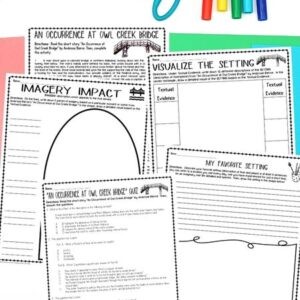
3. “The Masque of the Red Death”
This chilling tale from Edgar Allan Poe is set in a secluded abbey where Prince Prospero and his wealthy guests attempt to escape a deadly plague known as the Red Death. Despite their isolation efforts, the guests are confronted with their own mortality as a mysterious figure in a blood-red mask appears.
If you have not read any short stories and poems from Poe, this story is a perfect journey into the horror genre!
- The setting (description of time and place) plays a MAJOR role in the story, so following the Prince from room to room and highlighting the imagery (description that connects to the five senses) is very important when reading.
- If you have not introduced mood (emotion intended for the reader to experience), this story is PERFECT for delineating its progression from start to finish.
- As students read, you might guide them through identifying various examples of symbolism (object, person, or place that represents something else); each room, objects within, and the “antagonist” is symbolic in some way!
- How does the author convey the tone of the story? How would you, as the reader, describe the story’s mood?
- What role does the plot structure (focus on the different rooms) play in shaping the reader’s understanding of the story?
- What is the purpose of the symbolism in the story such as the clock and the masked figure?
Check out this EASY-TO-TEACH bundle , you can practice with your students, so they will feel more confident analyzing higher-level language in “The Masque of the Red Death!”
4. “The Cask of Amontillado”
Another chilling tale from Poe is the classic story “The Cask of Amontillado.” This one is set during Carnival in an unnamed Italian city. The plot centers on a man seeking revenge on a ‘friend’ he believes has insulted him. If your students are anything like mine, they will relish the ending particularly!
This is just one more of Poe’s short stories and tales that will capture the mind of every reader!
- As you plan for this short story, be sure to encourage your students to analyze the changing setting (description of time and place); following Fortunato from scene to scene will help your students track what is really going on.
- This story is the perfect moment to teach about dialogue (conversation within someone=internal and/or between someone and someone/thing else=external); Montresor certainly means more than what he SEEMS to say!
- You might also offer a mini-lesson on the 3 types of irony and how each plays a role in the story: verbal (when a person says the opposite of what is really intended), situational (an action occurs that is the opposite from what the reader expects), and dramatic (a character expects a result, but the opposite occurs and the audience can tell what will happen)!
- Describe Montresor. What are his motives and personality?
- What inferences can you make about Montresor’s mindset based on his dialogue?
- What is the purpose of the family’s motto and the carnival atmosphere?
Check out this Short Story Activity & Quiz Bundle for Edgar Allan Poe’s “The Cask of Amontillado,” which contains questions and answers modeled after various reading standardized tests as well as pre-quiz reading comprehension questions, graphic organizers, and a writing activity to get students thinking critically about this classic short story involving REVENGE!
Want 7 more teaching ideas for one of Poe’s epic short stories and questions to go with it? Click below!
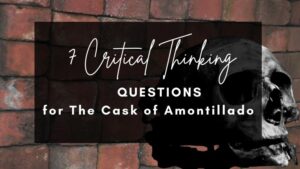
5. “To Build a Fire”
This story by Jack London describes the treacherous journey of a man through the harsh Yukon wilderness during extreme cold. Despite warnings and the company of a loyal dog, the man’s arrogance and underestimation of nature’s power lead to a tragic end.
Short stories and ideas related to survival in nature are still relevant today! Who knows when you might get lost on a hike or crashland in no man’s land?
- This story is PERFECT for a bit of literary analysis (examining the impact of various ideas, elements, or themes within a piece of literature); you could hone in on literary devices, characterization, theme, etc.!
- Integrating clips from survival shows will help students see connections to the world and extend their thinking by comparing (recognizing similarities) and contrasting (recognizing differences) varied experiences!
- Write a short narrative about surviving 24 hours in a different setting (description of time and place).
- How does the author use irony? Provide an example and explain.
- What real-world connections can be made between this story and our contemporary life?
- What is the story’s message about preparedness and respecting nature?
Grab these engaging short stories and activities to make teaching this Jack London story stress-free!
6. “The Cactus”
Told from the point of view of a young man at his former lover’s wedding, the narrator retells their story. Like most of O. Henry’s short stories and texts, this one has a twist that involves the titular cactus plant.
The ending will end in a bit of fun for your students!
- Introduce diction (word choice) and its impact within the story by hyperfocusing on specific words within the story . Students can look up definitions, locate synonyms, create their own sentences, replace the words, etc.
- Investigate twist endings (unexpected finish to a story); before reading the end of the story, ask students to guess why the girl “rejected” him. Some students may know the answer before reading it!
- Describe the main characters. What similarities and differences are evident? How does this affect the story’s action?
- What inferences can you make about Trysdale and his feelings about love and marriage?
- What are the real and symbolic meanings of the cactus?
This resource packed with questions and answers, graphic organizers, and writing activities is sure to get your students thinking about this love story driven by misconceptions.

7. “After Twenty Years”
This tale of friendship and betrayal focuses on the reunion of two old friends after twenty years apart on a New York City street corner. As they reminisce, something is revealed that demonstrates the reality of their bond as well as the choices they’ve made in life.
If you have not read O. Henry’s short stories and incorporated character analysis yet, this is your chance! The story is not long and can be completed in one to two class periods!
- Sometimes, we ask students to visualize (create a picture) in their minds, but why not give them the opportunity to use their artistic skills to draw the two characters?
- As students read, annotate for a description of each character; then, students can do a character analysis (investigation of the characters’ similarities and differences).
- What type of irony is used in the story? How does its use affect your interpretation and understanding of the story?
- How does the urban setting contribute to the mood of the story?
- What is the story’s message about friendship and loyalty?
Examine the links between loyalty and duty with this set of resources designed specifically for this O. Henry story.
8. “The Lottery”
“The Lottery” is the quintessential short story for middle school or high school English! Shirley Jackson’s “The Lottery” tells the story of an annual ritual that takes place in a seemingly idyllic town. When the townsfolk gather for the lottery drawing, a shocking turn of events demonstrates the dark side of human nature and their ties to (outdated) traditions.
- Introduce the terms suspense (uncertainty and/or excitement leading up to a major event) and tension (anxiety or uneasy feelings experienced by characters). While reading, identify evidence that relates to each of these concepts and chat/write about their impact on meaning and plot.
- Teach title (the name of the text) analysis. The title of “The Lottery” is perfect for teaching the impact of the title and audience expectations. Before reading, students may write what they believe the story will be about based on the title. After reading, students can complete a quick write responding to their previous expectations! You can do a text analysis for all short stories and poems!
- What role does the plot structure play in building suspense and tension? (Consider the revelation of the lottery’s ‘prize’ in particular.)
- What social commentary is being made through the story and its characters?
- Describe Mr. Summers, Tessie, and Old Man Warner. What does the story reveal about their role in the community and their feelings about the lottery?
Give yours elf a breath of fresh air with this NO PREP curriculum that integrates test prep within the teaching of literature by using Shirley Jackson’s quintessential story!
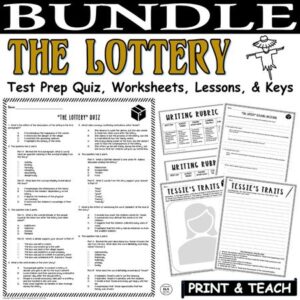
9. “The Pedestrian”
This Ray Bradbury story follows a lone walker in a futuristic society in which everyone else is consumed by technology, particularly the television. One evening, the walker encounters a police car that questions his unusual behavior and the end is quite unexpected! (Most of Bradbury’s short stories and texts connect to the future and technology in some way!)
- This story exemplifies Dystopian Literature (texts that include a supposedly perfect future society marred in some way by governmental or societal oppression). Using this story to introduce this type of literature is always fun for students because they will easily make connections to other dystopic short stories and poems!
- Teach about mood (the emotional impact of a story’s description/action). The goal is to get students to deepen their critical thinking skills by recognizing how the mood changes and the purpose for that change!
- How does the author use foreshadowing and suspense to build the mood of the story?
- What is the central theme of the story? How might it connect with our current world?
- What similes and metaphors does Bradbury use to describe the community and its members? What is notable about these comparisons?
With this resource about Bradbury’s “The Pedestrian,” you can just print and teach the lesson and activities with EASE!
10. “The Gift of the Magi”
This 1905 story by O. Henry relays a tale about a couple struggling to make ends meet. Throughout the story, they both figure out gifts to buy one another for Christmas and realize what love truly means!
- Review character traits (how a character is depicted internally and externally). Log the traits of each character within the story and how they are important to the meaning of the story.
- Extend (move beyond the text) critical thinking skills by encouraging students to think and write about other people. If they had $1,000 to spend on someone else, how would they spend the money and why?
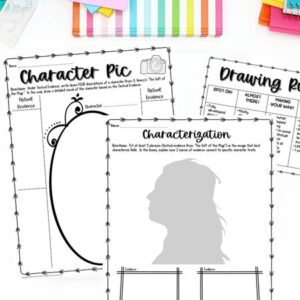
- How would you describe Della and Jim, and their relationship?
- What values do the characters have, when you consider their actions and decisions?
- Explain how dramatic irony is used in the story. Is it necessary? Is it effective? Why or why not?
This tale is a great addition to your short stories and questions unit around the winter holidays! Save yourself time at that time of the year with this lesson bundle .
11. “The Monkey’s Paw”
“The Monkey’s Paw” is a classic horror story about the White family who come into possession of a mystical monkey’s paw that grants three wishes. Despite warnings, they use it and then face devastating consequences as a result.
- Teach about the elements of the horror/suspense genre (Ex. Scary movies are typically dark, stormy, surprising, morbid, etc.).
- Create a thematic statement (message relayed by the text in a complete sentence). There is no perfectly created theme (message) unless it is directly stated by the author; however, students can create a theme by supporting their ideas with evidence from the story!
- What is the main theme of the story? Or how does the author communicate the themes of greed or fate? Is one stronger than the other?
- Are Mr. and Mrs. White more alike or different from one another? How do you know?
- Should we be afraid of the unknown? What message does the story share? Do you agree or disagree?
Examine W.W. Jacobs’ classic story with this set of questions and answers along with rigorous reading and writing activities . While it is ideal for a spooky season, the story is valuable for its ability to hook readers any time of year!
12. “Lamb to the Slaughter”
This classic story with a killer plot twist is about a woman who kills her husband and gets away with murder thanks to cooking a leg of lamb!
- You could introduce the plot elements (exposition, rising action, climax, falling action, resolution), encourage students to identify major events to fit each element and write down textual evidence to support their ideas.
- Complete a film analysis (examination of film techniques and their effects) to compare/contrast the short story with the classic Alfred Hitchcock television episode.
- What is Mary Maloney’s state of mind? Does it remain the same or does it change throughout the story? Explain.
- Is the resolution of the story satisfying? Why or why not? Why do you think the author ended it as he did?
- How does irony contribute to the theme of deception in the story? Explain.
Spice up your middle school English or high school English class with this short stories and activities bundle for Dahl’s famous story!
13. “The Tell-Tale Heart”
Poe’s classic psychological thriller is narrated by an unnamed protagonist who insists on their sanity while recounting how they murdered an old man. The narrator is haunted by the sound of the victim’s beating heart, which ultimately drives him to confess to the crime despite not originally being a suspect.
- Teach symbolism (object, person, or place that represents something else) by focusing on the heart and eye . The author used these symbols in various ways!
- Investigate psychology (the study of the human mind) as a part of the story. Determine what is fact and what is fiction within the narrator’s mind.
- What does the story reveal about the human psyche?
- What is the deeper meaning of the two key symbols in the story – the beating heart and the eye of the old man?
- What role do the narrator’s inner thoughts play in the development of the plot?
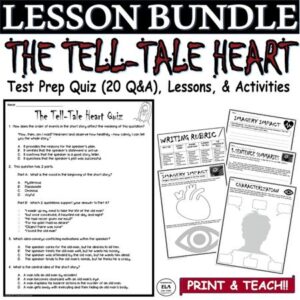
This Short Story Comprehension Bundle offers quick (and effective!) ways to assess students’ learning and understanding of the story. It’s easy to use and will no doubt save you time too!
14. “The Scarlet Ibis”
Emotional short stories and their counterparts have a place as well in English classrooms! This short story by James Hurst about two brothers is a heartbreaking must-read. Through flashbacks, the unnamed narrator tells the life story of his younger sickly brother William Armstrong, who is nicknamed Doodle. And the end…well, you’ll see.
- Define and explain the purpose of a flashback (referring back to the past within a story). Think about the implications of never thinking back on the past or always thinking about the past.
- Complete a comparison chart between Doodle and the Ibis as you read along. Then, students can create a visual of each after they have ready by using their own evidence!
- What is the meaning of the story’s title and the presence of a scarlet ibis in the story?
- What is the central theme of the story? How do the events of the story support this chosen theme?
- How does the author use personification for the storm? What effect does this have on the story?
This flexible resource features critical thinking questions and answers as well as writing and reading activities for students to explore Hurst’s heartbreaking story.
15. “The Veldt”
This science fiction story by Ray Bradbury was first published as “The World the Children Made” and it is quite fitting as a title! The story focuses on a futuristic world in which a video screen can be controlled and it turns out to be more than simple virtual reality! By the story’s conclusion, the world the children made is the downfall of their parents.
- Compare and contrast “The Veldt” with “The Pedestrian,” two short stories and dystopic texts by Ray Bradbury. Analyze the similarities and differences of both short stories and create a thematic statement that connects to both texts!
- Make connections to our current reality in the 21st century. Locate research about the implications of technology on young people and integrate this information as you discuss this short story.
- How does the author address the theme of technology versus humanity in the story? Do you agree with this commentary? Why or why not?
- How does the nursery reflect the personalities of Wendy and Peter in this story?
- Do you know the story of Peter Pan and his friend Wendy? What connections can you make between it and this story by Ray Bradbury?
Ray Bradbury’s classic short stories and similar passages are the BEST to teach in middle and high school English! With so much to dive into, they are sure to be a hit with your students. Grab this set of activities to extend your students’ engagement with rigorous reading and writing activities about “The Veldt.”
16. “The Necklace”
A woman who longs for a life of luxury and elegance beyond her means faces consequences when she loses a borrowed necklace. Guy de Maupassant’s story ends with a twist that has the reader question the value of material possessions.
- I love comparing this short story with O. Henry’s “The Gift of the Magi.” You might choose to focus on the theme, characterization, setting, etc.
- Summarize (writing about the main idea with details) each chunk of the story as you read with your students. Instead of asking students to write a paragraph, you could ask students to create each summary in only one sentence.
- The story explores vanity, deception, and the consequences of striving for social status. Which theme do you think is the most important? Explain with support from the story.
- Is Mathilde Loisel a likable character? Does this change during the story? Does it matter if the reader likes her? Why or why not?
- What clues does the author provide throughout the story that foreshadow the twist at the story’s end?
Focus on the standards with this Short Story Lesson Bundle for “The Necklace” by Guy de Maupassant!
Need help with implementing activities for “The Necklace?” See below!
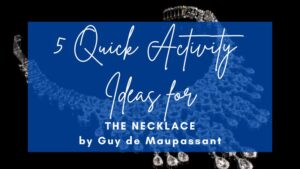
17. “A Vendetta”
Guy de Maupassant’s late-19th-century story is all about REVENGE. A mother is obsessed with creating a plan to avenge her son’s murder and she then puts the plan into action with a morbid outcome.
- There are so many texts that involve REVENGE! Why not use this concept as a focus for a thematic unit (texts linked to a similar concept and/or message)? You could read “A Poison Tree,” “The Cask of Amontillado,” and “Lamb to the Slaughter” as well as “A Vendetta” with the intention of writing about all 4 for a comparison/contrast paper, presentation, or seminar.
- Analyze the development (how a character changes over time) of the mother and the dog throughout the story; you might annotate for similarities and differences as well as their motivations!
- What comment is the story making about the nature (or need) for justice? Do you agree or disagree? Why or why not?
- What similes and metaphors does the author use to communicate the main character’s feelings about the vendetta?
- How does the author use details to explain the main character’s thoughts, feelings, and motivation?
Add these activities for this lesser-known work to your short story plans. It’s sure to keep things fresh for your short stories and activities unit!
18. “Thank You, Ma’am” (also known as “Thank You, M’am”)
This heartfelt story by Langston Hughes tells the story of Luella, an older woman in the neighborhood, who is nearly robbed by a young man named Roger. In response to Roger, Luella brings him back to her home and treats him with an abundance of kindness, which has a profound effect on Roger.
This tale is at the top of the list for the BEST short stories and passages for upper middle and younger high school students!
- Introduce perspective and/or point of view (how a story is told: 1st, 2nd, 3rd omniscient, 3rd limited, 3rd objective). Students might rewrite the story from another perspective or extend the story using the perspective of one of the main characters.
- Review plot elements with a focus on the exposition (introduction to the characters, setting, and conflict), climax (highest point of interest/turning point of the story), and resolution (how the story is concluded and/or resolved in some way.) You could assign an activity surrounding each concept: visualization of the scene, a journal response to the event, or a short response focused on how the element is important to the overall theme!
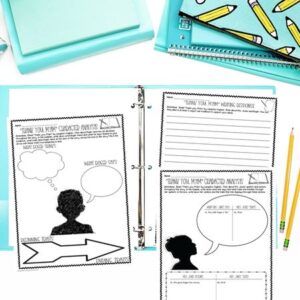
- Do you believe in second chances? What does the story say about second chances?
- How might the climax of the story also be seen as the turning point in Roger’s life?
- How would you describe Mrs. Luella Bates Washington Jones? Are her actions expected or unexpected in the story? Consider from Roger’s and the reader’s point of view.
Click to check out all of the details for this BUNDLE with differentiated options , which includes a Test Prep Quiz (with varied options), Venn Diagrams, Graphic Organizers, and Writing Responses!!
19. “Click Clack the Rattle Bag”
This short story by Neil Gaiman is creepy and fun in the best ways possible! The narrator is taking care of his girlfriend’s little brother and walking him to bed when the child asks for a story. Instead of the narrator sharing a story, the boy shares about the Click Clacks who drink their prey and leave behind rattling bodies. The end is too good to be missed!
Short stories and plots like those in “Click Clack the Rattle Bag” will most certainly engage even your most struggling learners!
- We all know that test prep can be tough as many reading passages are, well, boring! Why not accomplish some test prep with your students and incorporate 5 standardized test-related questions ? You could focus on theme, structure, order of events, characterization, etc.!
- Help students make inferences (acknowledging and hypothesizing about the impact of details that are not directly referenced or stated) as the scene moves along. Students can analyze the change in the setting, the little boy himself, the story the boy is telling, and specific phrases from the story.
- What details in the story contribute to its eerie atmosphere or mood? Or what figurative language devices does Neil Gaiman use to create a sense of suspense in the story?
- How does the author use ambiguity in the story? Is it effective or not? Explain.
- What inferences can you make about the relationship between the narrator and the young boy?

This “Click Clack the Rattle Bag” Quiz Pack for middle and high school students uses the Common Core standards and contains questions and answers modeled after various state standardized tests! Make teaching this amazing short story by Neil Gaiman SIMPLE & EASY!
Why should we incorporate more short stories and activities in our teaching?
While I would never advocate replacing all novels with short stories and smaller texts, there is still something to be said about spending quality time with short stories and excerpts.
Including short stories and standards-based activities is an ideal option to improve reading comprehension and develop skills, especially in middle and high school English classes!
SHORT STORIES AND ACTIVITIES RESOURCES:
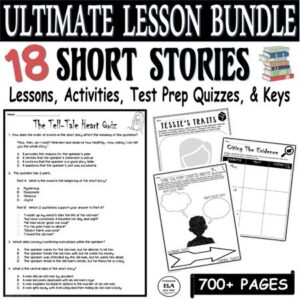
This Short Stories and Test Prep Questions ULTIMATE BUNDLE with Lessons, Quizzes, and Activities uses the Common Core standards with reading comprehension QUESTIONS and ANSWERS for 18 short stories such as “The Most Dangerous Game,” “The Monkey’s Paw,” “The Tell-Tale Heart,” “After Twenty Years,” “The Gift of the Magi,” “The Veldt,” “The Lottery,” “The Pedestrian,” etc. modeled after various state reading exams.
Make teaching short stories and activities SIMPLE & EASY!
Just PRINT & TEACH with engaging short stories and lessons!!
Need more fun ideas for teaching short stories and corresponding activities? Check out my store Kristin Menke-Integrated ELA Test Prep !

Hi, I’m KRISTIN!
I primarily focus on integrating multiple disciplines and subjects. The goal is to make teaching simplified and effective!
Let's Connect
- Follow Follow
Click below to download “13 Simple Strategies to make test prep a breeze!”

Finding Faith Everywhere.
God is Truth, Goodness, and Beauty itself.
Wherever they are found, God is also present.

Finding Faith Everywhere
Teach critical thinking with stories.
Confidently teach your students to seek and love the truth wherever it is found.
People skilled in critical thinking are:
Problem solvers
Truth seekers

Critical thinking is using reason to pursue the truth by:
Making distinctions between what is true, and what is not true
Considering the possible consequences of an action or an idea
Discovering the principles at the foundations of an idea
Developing your natural process of reasoning
Critical thinking skills train your mind to:
Observe a situation or object
Analyze what you've observed
Arrive at a logical conclusion

HOW DO YOU LEARN TO DO THAT WITH STORIES?
I'll walk you through how to teach critical thinking skills to your students by using stories in my lesson plans.
Critical thinking skills train your mind to:
Teaching Critical Thinking with Stories is a series of printable exercises that give you:
Planned Series of Exercises
All students can begin with the first set of exercises. When they're ready for more challenges, you can add additional levels, or incorporate the challenges in the levels
Additional Challenges to Exercises
The exercises also have additional levels to challenge students to go deeper into the story and develop their capacity for more complex thoughts. That allows you to use the same exercise for an entire class, while making adjustments for individual students who need more of an intellectual challenge
Human Development
I include explanations on what abilities your students will develop as they work through the different exercises, and what foundations they’re laying so that students can learn how to think more clearly and engage in more thoughtful discussions.
These lesson plans can be used with any work of fiction.
These exercises are grouped into 3 levels:

Level 1 (Observation): Memory, Logic, and Sequencing
The exercises help your students to develop their imagination and memory, while learning cause and effect through sequencing exercises. They also take our natural ability to use reason, and develop it. The first few exercises in these lesson plans can be used for children as young as 3, but the rest of the exercises are intended for children who are at least 5. The extra levels to some of the exercises can challenge students even through middle school.
Level 2 (Reasoning to a Conclusion): Transformation in Stories
You’ll be helping your students learn to think about change, and how changes and conflict that a character experiences lead to that character’s transformation by the end of the story. The exercises guide them through what they should be paying attention to, and how the author prepares the reader for the character's transformation. The first exercises can be used for younger children who are able to read and write. The rest of these exercises are best used beginning with Grade 5/age 10 and continue through high school. Some of the extra challenges should only be attempted by very advanced students.
Level 3 (Abstract Thought): Symbols and Allusions in Stories
You’ll be teaching your students how to identify and understand symbols and metaphors in stories. They will also learn how authors are often referring to other sources when using symbols, and how those references affect the story they're reading. These exercises require the ability to think abstractly, so they’re best used for high school and above. Students in middle school are usually not ready to engage in abstract thought, so my recommendation for using these is for grades 9 through adult. Just as with the Level 2 exercises, some of the extra levels should only be attempted by very advanced students.
Each Lesson Plan Includes:
Background information on what skills the student will develop with the exercises
Additional levels for exercises to challenge your student
A list of recommended stories and authors
A series of exercises that progressively challenge your student
The exercises in Teaching Critical Thinking with Stories allow teachers and parents—who know their kids better than anyone—to decide what their students and children are ready for, and to discern what challenges each individual student or child needs, at every level.
These exercises can be used with any story, so they can be used over and over again.
These exercises help your students:
Form the mind by directing it towards the truth
Engage with ideas in greater depth
Make distinctions between truth and error
Develop abstract thinking
Engage with stories in greater depth
Encourage discussion of ideas
That leads to a higher quality discussion for:
Literature circles for younger students
Book club discussions for adult learners
Readers of any age will get more out of every story and bring their own insights to any discussion.

Regular Price: $9.97

Regular Price: $19.97

** SendOwl uses popup forms for ordering, so you may need to adjust your browser setting to allow popups when you click to purchase these lesson plans
How to Get Started:
1. download the file.
Once you purchase the file, you will receive a link to download the PDF.
2. READ THE STORY
The story is the foundation. Pick any story and read it, or start with one from the included list of suggested stories and authors.
3. PRINT THE EXERCISES
The pages are color-coded so you can go right to the exercises and print them out, or choose to read more about the “why” behind each of the exercises in the packet.

Memory, Sequencing, and Logic
Developing the imagination
Strengthening memory
Understanding how stories work

Regular Price: $19.97
Discovering How Characters Change in a Story
How characters are transformed
Where changes happen
Develop memory, logic, analytical skills

Discovering Common Elements Across Stories
Understanding symbols
Literary allusions
Developing abstract thought
Save When you Buy the Full Bundle
Purchase all 3 lesson plans together, save 20% off the full price, automatically get updates through the end of 2021.

* FREE Updates *
If you purchase now, you will receive any updates to the lesson plan you purchase, now
through the end of 2021!
Click here to buy all 3 for $39.97
TO PURCHASE PRINTABLES INDIVIDUALLY, CLICK BELOW
This is the first time these lesson plans have been made available,which is why they are being offered at a low price. When they are updated to the final version, I will send you a link to download the final version.
Printables are downloadable digital files which can't be returned, so I don't offer refunds on them.

How Do Detectives Solve their Cases in Best-Selling Fictional Stories?

Why is Lent Always 40 Days Long?

What is Wrong with Catholics Who Actually Read the Bible Literally?
- Our Mission
Helping Students Hone Their Critical Thinking Skills
Used consistently, these strategies can help middle and high school teachers guide students to improve much-needed skills.

Critical thinking skills are important in every discipline, at and beyond school. From managing money to choosing which candidates to vote for in elections to making difficult career choices, students need to be prepared to take in, synthesize, and act on new information in a world that is constantly changing.
While critical thinking might seem like an abstract idea that is tough to directly instruct, there are many engaging ways to help students strengthen these skills through active learning.
Make Time for Metacognitive Reflection
Create space for students to both reflect on their ideas and discuss the power of doing so. Show students how they can push back on their own thinking to analyze and question their assumptions. Students might ask themselves, “Why is this the best answer? What information supports my answer? What might someone with a counterargument say?”
Through this reflection, students and teachers (who can model reflecting on their own thinking) gain deeper understandings of their ideas and do a better job articulating their beliefs. In a world that is go-go-go, it is important to help students understand that it is OK to take a breath and think about their ideas before putting them out into the world. And taking time for reflection helps us more thoughtfully consider others’ ideas, too.
Teach Reasoning Skills
Reasoning skills are another key component of critical thinking, involving the abilities to think logically, evaluate evidence, identify assumptions, and analyze arguments. Students who learn how to use reasoning skills will be better equipped to make informed decisions, form and defend opinions, and solve problems.
One way to teach reasoning is to use problem-solving activities that require students to apply their skills to practical contexts. For example, give students a real problem to solve, and ask them to use reasoning skills to develop a solution. They can then present their solution and defend their reasoning to the class and engage in discussion about whether and how their thinking changed when listening to peers’ perspectives.
A great example I have seen involved students identifying an underutilized part of their school and creating a presentation about one way to redesign it. This project allowed students to feel a sense of connection to the problem and come up with creative solutions that could help others at school. For more examples, you might visit PBS’s Design Squad , a resource that brings to life real-world problem-solving.
Ask Open-Ended Questions
Moving beyond the repetition of facts, critical thinking requires students to take positions and explain their beliefs through research, evidence, and explanations of credibility.
When we pose open-ended questions, we create space for classroom discourse inclusive of diverse, perhaps opposing, ideas—grounds for rich exchanges that support deep thinking and analysis.
For example, “How would you approach the problem?” and “Where might you look to find resources to address this issue?” are two open-ended questions that position students to think less about the “right” answer and more about the variety of solutions that might already exist.
Journaling, whether digitally or physically in a notebook, is another great way to have students answer these open-ended prompts—giving them time to think and organize their thoughts before contributing to a conversation, which can ensure that more voices are heard.
Once students process in their journal, small group or whole class conversations help bring their ideas to life. Discovering similarities between answers helps reveal to students that they are not alone, which can encourage future participation in constructive civil discourse.
Teach Information Literacy
Education has moved far past the idea of “Be careful of what is on Wikipedia, because it might not be true.” With AI innovations making their way into classrooms, teachers know that informed readers must question everything.
Understanding what is and is not a reliable source and knowing how to vet information are important skills for students to build and utilize when making informed decisions. You might start by introducing the idea of bias: Articles, ads, memes, videos, and every other form of media can push an agenda that students may not see on the surface. Discuss credibility, subjectivity, and objectivity, and look at examples and nonexamples of trusted information to prepare students to be well-informed members of a democracy.
One of my favorite lessons is about the Pacific Northwest tree octopus . This project asks students to explore what appears to be a very real website that provides information on this supposedly endangered animal. It is a wonderful, albeit over-the-top, example of how something might look official even when untrue, revealing that we need critical thinking to break down “facts” and determine the validity of the information we consume.
A fun extension is to have students come up with their own website or newsletter about something going on in school that is untrue. Perhaps a change in dress code that requires everyone to wear their clothes inside out or a change to the lunch menu that will require students to eat brussels sprouts every day.
Giving students the ability to create their own falsified information can help them better identify it in other contexts. Understanding that information can be “too good to be true” can help them identify future falsehoods.
Provide Diverse Perspectives
Consider how to keep the classroom from becoming an echo chamber. If students come from the same community, they may have similar perspectives. And those who have differing perspectives may not feel comfortable sharing them in the face of an opposing majority.
To support varying viewpoints, bring diverse voices into the classroom as much as possible, especially when discussing current events. Use primary sources: videos from YouTube, essays and articles written by people who experienced current events firsthand, documentaries that dive deeply into topics that require some nuance, and any other resources that provide a varied look at topics.
I like to use the Smithsonian “OurStory” page , which shares a wide variety of stories from people in the United States. The page on Japanese American internment camps is very powerful because of its first-person perspectives.
Practice Makes Perfect
To make the above strategies and thinking routines a consistent part of your classroom, spread them out—and build upon them—over the course of the school year. You might challenge students with information and/or examples that require them to use their critical thinking skills; work these skills explicitly into lessons, projects, rubrics, and self-assessments; or have students practice identifying misinformation or unsupported arguments.
Critical thinking is not learned in isolation. It needs to be explored in English language arts, social studies, science, physical education, math. Every discipline requires students to take a careful look at something and find the best solution. Often, these skills are taken for granted, viewed as a by-product of a good education, but true critical thinking doesn’t just happen. It requires consistency and commitment.
In a moment when information and misinformation abound, and students must parse reams of information, it is imperative that we support and model critical thinking in the classroom to support the development of well-informed citizens.
JavaScript seems to be disabled in your browser. For the best experience on our site, be sure to turn on Javascript in your browser.
- Order Tracking
- Create an Account

200+ Award-Winning Educational Textbooks, Activity Books, & Printable eBooks!
- Compare Products
Reading, Writing, Math, Science, Social Studies
- Search by Book Series
- Algebra I & II Gr. 7-12+
- Algebra Magic Tricks Gr. 2-12+
- Algebra Word Problems Gr. 7-12+
- Balance Benders Gr. 2-12+
- Balance Math & More! Gr. 2-12+
- Basics of Critical Thinking Gr. 4-7
- Brain Stretchers Gr. 5-12+
- Building Thinking Skills Gr. Toddler-12+
- Building Writing Skills Gr. 3-7
- Bundles - Critical Thinking Gr. PreK-9
- Bundles - Language Arts Gr. K-8
- Bundles - Mathematics Gr. PreK-9
- Bundles - Multi-Subject Curriculum Gr. PreK-12+
- Bundles - Test Prep Gr. Toddler-12+
- Can You Find Me? Gr. PreK-1
- Complete the Picture Math Gr. 1-3
- Cornell Critical Thinking Tests Gr. 5-12+
- Cranium Crackers Gr. 3-12+
- Creative Problem Solving Gr. PreK-2
- Critical Thinking Activities to Improve Writing Gr. 4-12+
- Critical Thinking Coloring Gr. PreK-2
- Critical Thinking Detective Gr. 3-12+
- Critical Thinking Tests Gr. PreK-6
- Critical Thinking for Reading Comprehension Gr. 1-5
- Critical Thinking in United States History Gr. 6-12+
- CrossNumber Math Puzzles Gr. 4-10
- Crypt-O-Words Gr. 2-7
- Crypto Mind Benders Gr. 3-12+
- Daily Mind Builders Gr. 5-12+
- Dare to Compare Math Gr. 2-7
- Developing Critical Thinking through Science Gr. 1-8
- Dr. DooRiddles Gr. PreK-12+
- Dr. Funster's Gr. 2-12+
- Editor in Chief Gr. 2-12+
- Fun-Time Phonics! Gr. PreK-2
- Half 'n Half Animals Gr. K-4
- Hands-On Thinking Skills Gr. K-1
- Inference Jones Gr. 1-6
- James Madison Gr. 10-12+
- Jumbles Gr. 3-5
- Language Mechanic Gr. 4-7
- Language Smarts Gr. 1-4
- Mastering Logic & Math Problem Solving Gr. 6-9
- Math Analogies Gr. K-9
- Math Detective Gr. 3-8
- Math Games Gr. 3-8
- Math Mind Benders Gr. 5-12+
- Math Ties Gr. 4-8
- Math Word Problems Gr. 4-10
- Mathematical Reasoning Gr. Toddler-11
- Middle School Science Gr. 6-8
- Mind Benders Gr. PreK-12+
- Mind Building Math Gr. K-1
- Mind Building Reading Gr. K-1
- Novel Thinking Gr. 3-6
- OLSAT® Test Prep Gr. PreK-K
- Organizing Thinking Gr. 2-8
- Pattern Explorer Gr. 3-9
- Practical Critical Thinking Gr. 8-12+
- Punctuation Puzzler Gr. 3-8
- Reading Detective Gr. 3-12+
- Red Herring Mysteries Gr. 4-12+
- Red Herrings Science Mysteries Gr. 4-9
- Science Detective Gr. 3-6
- Science Mind Benders Gr. PreK-3
- Science Vocabulary Crossword Puzzles Gr. 4-6
- Sciencewise Gr. 4-12+
- Scratch Your Brain Gr. 2-12+
- Sentence Diagramming Gr. 3-12+
- Smarty Pants Puzzles Gr. 3-12+
- Snailopolis Gr. K-4
- Something's Fishy at Lake Iwannafisha Gr. 5-9
- Teaching Technology Gr. 3-12+
- Tell Me a Story Gr. PreK-1
- Think Analogies Gr. 3-12+
- Think and Write Gr. 3-8
- Think-A-Grams Gr. 4-12+
- Thinking About Time Gr. 3-6
- Thinking Connections Gr. 4-12+
- Thinking Directionally Gr. 2-6
- Thinking Skills & Key Concepts Gr. PreK-2
- Thinking Skills for Tests Gr. PreK-5
- U.S. History Detective Gr. 8-12+
- Understanding Fractions Gr. 2-6
- Visual Perceptual Skill Building Gr. PreK-3
- Vocabulary Riddles Gr. 4-8
- Vocabulary Smarts Gr. 2-5
- Vocabulary Virtuoso Gr. 2-12+
- What Would You Do? Gr. 2-12+
- Who Is This Kid? Colleges Want to Know! Gr. 9-12+
- Word Explorer Gr. 6-8
- Word Roots Gr. 3-12+
- World History Detective Gr. 6-12+
- Writing Detective Gr. 3-6
- You Decide! Gr. 6-12+

Tell Me a Story
Storybooks that teach critical thinking.
Grades: PreK-1
Critical Thinking, Language Arts
- Award Winner
This fun, easy to use picture book is made up of two stories. Students tell each story by analyzing the pictures and responding to the guided questions on each page. The questions are engaging and produce a deeper analysis of the scene and the storyline by encouraging students to provide details, describe events, explain motives, make evidence-based predictions, and use cause and effect leading up to the scene. Each story develops important critical and creative thinking skills.
- Observation
- Identifying and evaluating evidence
- Comparing and contrasting shapes and objects
- Inference (evidence-based prediction)
- Cause and effect
- Identify and describing a sequence of events
These stories also develop pre-reading skills. Pre-readers progress from “listening” to a story to “telling” a story, becoming more engaged in the reading process as they identify and shape the storyline. Reading involves more than just decoding written text. A large part of reading is gaining meaning from symbols—both letters and pictures.
Description and Features
All products in this series.
• Our eBooks digital, electronic versions of the book pages that you may print to any paper printer. • You can open the PDF eBook from any device or computer that has a PDF reader such as Adobe® Reader®. • Licensee can legally keep a copy of this eBook on three different devices. View our eBook license agreement details here . • You can immediately download your eBook from "My Account" under the "My Downloadable Product" section after you place your order.
- Add to Cart Add to Cart Remove This Item
- Special of the Month
- Sign Up for our Best Offers
- Bundles = Greatest Savings!
- Sign Up for Free Puzzles
- Sign Up for Free Activities
- Toddler (Ages 0-3)
- PreK (Ages 3-5)
- Kindergarten (Ages 5-6)
- 1st Grade (Ages 6-7)
- 2nd Grade (Ages 7-8)
- 3rd Grade (Ages 8-9)
- 4th Grade (Ages 9-10)
- 5th Grade (Ages 10-11)
- 6th Grade (Ages 11-12)
- 7th Grade (Ages 12-13)
- 8th Grade (Ages 13-14)
- 9th Grade (Ages 14-15)
- 10th Grade (Ages 15-16)
- 11th Grade (Ages 16-17)
- 12th Grade (Ages 17-18)
- 12th+ Grade (Ages 18+)
- Test Prep Directory
- Test Prep Bundles
- Test Prep Guides
- Preschool Academics
- Store Locator
- Submit Feedback/Request
- Sales Alerts Sign-Up
- Technical Support
- Mission & History
- Articles & Advice
- Testimonials
- Our Guarantee
- New Products
- Free Activities
- Libros en Español

Want to raise a critical thinker? Try telling stories.
Engaging kids with storytelling skills has real brain benefits.
Like most elementary and middle school-age children, Jennifer Aycock’s four kids, ages six to 13, love a good story. And though reading is a cherished family activity, the Aycock family doesn’t always rely on books.
“When we’re telling stories out loud, you can see the kids engage differently,” says Aycock, a longtime teacher who incorporates storytelling in her classroom. “They listen more intently, and it seems to really spark their imagination.”
Scientific research on how kids’ brains respond to storytelling is relatively new, says Katie Knutson, board chair of the National Storytelling Network and a professional storyteller. “[But] it’s clear that there are significant cognitive and academic benefits to both story listening and storytelling.”
Telling stories is nothing new and has been around since before the written language. The practice didn’t just communicate information—like that an area was dangerous because of predators—but also preserved history, honored religious traditions, and entertained.
They also create cultural cohesion. “Often stories are told in families to connect the next generation to those who have gone before, or to help kids develop the values that are most important in their culture,” Knutson says.
Weaving this creative tradition into your household can foster cognitive, social, and emotional development, which many parents are concerned has been disrupted by COVID-19-related school closures and isolation. Here’s why storytelling is good for kids—and how parents can make it part of their family life.
FREE BONUS ISSUE
Storytelling and the brain.
Although all kinds of story forms can provide great entertainment and convey valuable lessons, the ways kids process oral storytelling—whether they’re hearing a story or telling it themselves—elicits unique brain responses that are different from watching a television show, reading a book, or journaling.
“Using MRI imaging, neuroscience research has demonstrated that when a listener is engrossed in a teller’s story enough to forget about their surroundings—a state called narrative transport —the functioning areas of the tellers' brains are [soon] mirrored in the listener's brain,” says Cathy Miyata, a professor at Wilfrid Laurier University and master storyteller. This phenomenon is known as neural coupling, which is unique to verbal communication.
Oxytocin, a hormone involved in social bonding, may also play a role in narrative transport. “When children are told a meaningful or emotional story, their brain’s emotional response triggers a release of [the] neurochemical,” Miyata explains. Researchers suggest that this is because when listeners become emotionally engaged with the characters in a narrative, they are drawn deeper into that story world.
This social bonding experience—between the storyteller, listener, and story characters—can also help facilitate empathy building in kids. “Exposing listeners to emotional and meaningful stories influences their ability to empathize and actually motivates them to demonstrate acts of caring,” Miyata says.
The cognitive and social benefits of storytelling
“When children hear stories, they practice many of the skills they’ll need to be effective readers, writers, and critical thinkers,” Miyata says.
For example, research suggests that listening to and telling stories to an audience (even of one) can boost kids’ cognitive engagement, ability to identify patterns, and story-sequencing skills, or being able to identify the components of a story like the beginning, middle, and end.
Classroom studies in the United States and Canada also show a strong correlation between increased participation in storytelling—both as listener and teller—and children's problem-solving skills both at school and at home, adds Kendall Haven , a professional storyteller and author of Story Smart: Using the Science of Story to Persuade, Influence, Inspire and Teach .
Then there are social benefits. During the COVID-19 pandemic, many children have been isolated from friends and communities, and storytelling can help them feel more connected at home.
That’s because sharing stories can help build the relationship between the storyteller and listener. “Reading to a child is a wonderful thing to do that has many, many benefits,” Miyata says. But storytelling without a script can remove barriers and open up the imagination. “When you take away the book, there’s just the parent and child, focused on one another, interacting and sharing in a unique experience.”
How to make storytelling a part of your family life
Storytelling at home can help kids expand their imaginations and develop critical-thinking skills—but they might need some help to get started.
“When we ask kids, and even adults, to make up a story, the options are so unlimited that it’s often a struggle to come up with anything at all,” Knutson says. “When we give a limit to their freedom, often in the form of a loose prompt, it frees them up to get wildly creative.”
Model storytelling. With younger kids, a great way to get started is for parents to model storytelling. You can even make this a collaborative process. For example, Knutson recommends asking your child to think of a person, place, and thing, and then shaping a story around those details.
Help kids practice active listening . Instead of asking children to sit quietly throughout the story, parents can ask kids to predict what’s coming next. (“What do you think she saw behind that big red door?”) Invite them to move their bodies with the story. (“Let’s all tiptoe like Camilla sneaking by the snake!”) Or help them participate in the telling process with simple call-and-response prompts. (“When I say no, you say way!”)
Encourage kids to ask why. When kids are ready to start telling their own stories, Haven recommends encouraging kids to focus less on what happens and more on why it’s happening and what the motivations of the characters are. This is a kind of exercise in empathy. “Give details about why the character is doing what they’re doing, and ask listeners to make guesses as to the why’s in other parts of the story,” she says.
Talk about feelings. Prompts that focus on specific emotions can also help kids incorporate their own experiences and ideas into stories. Parents might ask kids to share about a time they felt surprised, sad, scared, or excited, or to create a story about a birthday, a friendship, or starting something new.
Ask good questions. While storytelling absolutely can be about dragons, fairies, or volcanoes, parents can help kids learn to tell good stories by helping them see stories in their everyday lives. Instead of asking “How was your day?” or “What did you learn at school?” parents can get creative. (“What did the food smell like in the cafeteria at lunch this afternoon?” or “Did anyone do anything unexpected in class today?”)
Get the whole family involved. Especially when kids range in age, story games can spark creativity and allow everyone to participate at their level. Popular storytelling games include retelling games that require family members to use puppets or toys to recreate a story; challenges that involve retelling well-known stories with a new twist (think Little Red Riding Hood, but all the characters are people you know); and round-robin games, in which one person starts a story and others take turns completing it.
Such round-robin games are familiar to Jennifer Aycock and her family. “It’s fun to see each person's personality come out in the part of the story they tell,” she says. “It’s a great way to connect as a family, learn more about what’s going on in each other’s lives, and have fun.”
Related Topics
- STORYTELLING
- MENTAL HEALTH
You May Also Like

Dude! Your kid’s slang isn’t as bad as you think.

LOL: Why laughter might really be the best medicine for kids

Screen time is up—here's how to refocus on reading

Bringing out the genius in your child
- Terms of Use
- Privacy Policy
- Your US State Privacy Rights
- Children's Online Privacy Policy
- Interest-Based Ads
- About Nielsen Measurement
- Do Not Sell or Share My Personal Information
- Nat Geo Home
- Attend a Live Event
- Book a Trip
- Inspire Your Kids
- Shop Nat Geo
- Visit the D.C. Museum
- Learn About Our Impact
- Support Our Mission
- Advertise With Us
- Customer Service
- Renew Subscription
- Manage Your Subscription
- Work at Nat Geo
- Sign Up for Our Newsletters
- Contribute to Protect the Planet
Copyright © 1996-2015 National Geographic Society Copyright © 2015-2024 National Geographic Partners, LLC. All rights reserved
Developing Students' Critical Thinking Skills Through Whole-Class Dialogue

- Resources & Preparation
- Instructional Plan
- Related Resources
Students take positions all the time. They defend their love of a television show or character with evidence or support that justifies their position. However, students may struggle to think critically about the books they've read and take a position about events from those books. In this lesson, students either listen to the instructor read a book aloud or read the book silently. (The book used in this lesson is My Freedom Trip by Frances Park and Ginger Park.) After reading, students answer an open-ended question about an issue that could have multiple perspectives. Students take positions, then identify reasons to support their positions. They then evaluate the reasons and draw their own conclusions. The lesson may be followed by additional whole-class discussion sessions that place emphasis on dialogue, eventually transferring more and more responsibility to the students for their learning.
From Theory to Practice
- Dialogical-Thinking Reading Lessons (D-TRLs), in which students articulate their thoughts in response to literature through dialogue, go beyond the question-and-answer and recitation methods that usually deal only with literal thinking.
- Students develop critical thinking as they learn to justify their reasons for a certain position on a story-specific issue.
- The basic format of a D-TRL provides practice with identifying and evaluating reasons as well as drawing conclusions. As more responsibility for the elements of the D-TRL is transferred to students, they receive additional practice in formulating hypotheses and identifying central themes and issues
- When students have opportunities to pose questions, they assume more responsibility for determining what needs to be understood and for directing their own learning processes.
- Literature discussions based on student-posed questions address an array of reading, writing, and oral language core curriculum objectives.
- When student questioning reigns in literature discussions, students generate many questions, help one another clarify questions, listen carefully to their peers, engage in critical thinking, and appreciate the opportunity to reflect on their own questions.
Common Core Standards
This resource has been aligned to the Common Core State Standards for states in which they have been adopted. If a state does not appear in the drop-down, CCSS alignments are forthcoming.
State Standards
This lesson has been aligned to standards in the following states. If a state does not appear in the drop-down, standard alignments are not currently available for that state.
NCTE/IRA National Standards for the English Language Arts
- 3. Students apply a wide range of strategies to comprehend, interpret, evaluate, and appreciate texts. They draw on their prior experience, their interactions with other readers and writers, their knowledge of word meaning and of other texts, their word identification strategies, and their understanding of textual features (e.g., sound-letter correspondence, sentence structure, context, graphics).
- 6. Students apply knowledge of language structure, language conventions (e.g., spelling and punctuation), media techniques, figurative language, and genre to create, critique, and discuss print and nonprint texts.
- 11. Students participate as knowledgeable, reflective, creative, and critical members of a variety of literacy communities.
- 12. Students use spoken, written, and visual language to accomplish their own purposes (e.g., for learning, enjoyment, persuasion, and the exchange of information).
Materials and Technology
- My Freedom Trip by Frances Park and Ginger Park (Boyds Mills Press, 1998)
- Chart paper, board, or overhead
Central Question Chart
Preparation
Student objectives.
Students will
- Develop and demonstrate critical thinking skills as they take positions in response to a question, consider other viewpoints, identify reasons in support of their positions, evaluate supporting reasons for truth and acceptability, and draw final conclusions based on discussion
- Take responsibility for their own learning and for evaluating their own thoughts
- Participate as knowledgeable, reflective, creative, and critical persons in respectful dialogue with one another
Instruction and Activities
Before reading (15 minutes) Open the lesson with an informal discussion of what students already know about the Korean War. Tell them that they will be reading and discussing a book about one girl's experience during that war. Can they make predictions about the book based on its title and cover and what they already know about the war? Let students know that after reading the book, they're going to be asked a question that will take the whole class to answer-and everyone's answer could be different. What will be important is whether they can provide acceptable reasons to support their answers. Reading phase (about 15 minutes, depending on the length of the text and the reading comprehension method you use) Depending on your students' needs and the availability of book copies, you can read the book to your students using the guided reading approach, have the students partner/group read, or have the students read silently. The important thing to consider when conducting the reading phase is to make sure students understand the text entirely. This will allow them to fully participate in the discussion phase to follow.
- With the guided reading approach, intermittent discussion should take place. The discussion breaks should be informal and focus on sharing an understanding of what is happening in the text.
- If you use another approach, check in with the individuals or groups to ensure understanding by asking questions during or after the reading. Keep the questions focused for now on students' comprehension of the book, making sure everyone understands the basic story well enough to be able to participate in the discussion phase to follow.
Discussion phase (30 to 60 minutes, depending on class size) There are four basic components to this part of the lesson:
- Posing a central question and possible answers
- Identifying reasons to support the possible answers
- Evaluating the truth and acceptability of the supporting reasons
- Drawing final conclusions on the merit of the possible answers
As students become familiar with the critical-thinking process, these components can be modified to give students greater responsibility for their learning. (See Modifications for examples.) Before proceeding with the discussion, make sure to establish a few guidelines with the students. These guidelines can include
- Listening carefully to other students' questions, opinions, and reasons and responding to them in a helpful manner
- Respecting everyone's questions and everyone's responses
- Agreeing or disagreeing, but giving reasons to support your opinion
- Respecting everyone's opportunity to speak and waiting your turn
Central question. At this point, introduce a question that will be of interest to students and in response to which they will each have to take a position. The question should be thought-provoking, the answer to which can be debated. A sample question for this book (as listed on the Central Question Chart ) is, "Why did Mr. Han try to convince the soldier to let Soo go across the river instead of himself?" Once you have a question, you should offer two hypotheses (or positions) as answers to it. Record the two positions on chart paper, the board, or overhead. Sample positions are listed on the Central Question Chart. (Until students have practiced the subsequent processes of identifying and evaluating reasons, it is important to limit the position options for now to two.) Once the two positions are listed, ask each student to decide which position he or she thinks best answers the central question and to be prepared to explain why. Let students know that they can change their positions after the discussion. Identifying reasons . Have students explore each position by identifying supporting reasons for it. Talk to a student who supports the first position, for example. Ask the student why he or she believes it's correct. How about a student who supports the second position? Get the students to begin talking to each other, with you acting as facilitator between them. This may be a good time to abandon a rule of raising hands; instead, let students dialogue freely but respectfully. As they cite reasons, encourage them to use examples from the text, from their own background knowledge of not only the Korean War but any experiences they have had that help them understand the text, and from what they feel makes sense. Record all reasons on the chart underneath their respective positions, even those that make little sense or seem wrong. (In the course of the discussion, students will be evaluating the truth and acceptability of the reasons. If you filter out reasons according to your judgment, it will deny students the opportunity to evaluate their own thinking.) Evaluating reasons. After all the reasons are listed (and perhaps even as they are being listed), students should decide whether they are completely true, completely false, or are true or false depending on certain factors. As the facilitator, put each reason before the group for discussion and let students decide amongst themselves the truth and acceptability of each reason. For each reason, ask students the following kinds of questions (and eventually encourage them to ask each other and themselves): What makes this reason true? Or what makes it false? Are there times that it could be true, but other times when it could be false? What examples can you give from the book to support a reason as acceptable? Does it make sense? Why or why not? Should we accept this as a supporting reason for the position? Throughout this discussion, you may need to question the students or rephrase their ideas to help them formulate their thoughts. However, be sure not to put words in students' mouths. As students discuss the reasons, record their decisions about the reasons in the truth column of the chart. You can use a 'T' for true, 'F' for false, and 'D' for depends. For the 'T' and 'D' reasons, mark what makes them acceptable: 'TXT' for text support, 'BK' for background knowledge support, and 'LOG' for logical support. Students themselves may not know at first that an acceptable reason is based on text, background knowledge, or logic (i.e., what seems to make sense), but they should be able to decide if it's acceptable or not. As you classify the reasons, help them to understand why you are categorizing them as you are-that their discussion is leading you to figure out the kind of support each reason is based upon. Guide them in this thought process until they are able to tell you what justifies the reasons. Drawing conclusions. After all reasons have been evaluated, give students the opportunity to say what their positions are based on the discussion. Has anyone changed his or her mind? For those who are sticking with their original positions, do they feel more strongly about them now? Also, give students the option to say they have not made up their minds (for the ability to withhold judgment is central to critical thinking). Another way to end the lesson could be to have the students write their conclusions and justify their reasons in a journal entry or a more formal writing assignment. Modifications After a few lessons with the same book or subsequent readings, students will have had practice identifying and evaluating reasons for positions you hypothesize. Next, allow them to generate several positions of their own to new central questions. This will help them to develop hypothesizing skills. After practice at hypothesizing, move on to allowing them to generate their own central questions. You will have to determine their readiness for identifying central themes and issues, but also, you can expect by this time for students to help guide each other in this process. Another modification as students become more and more responsible for their own learning may include switching to peer discussion groups, which then report their results in writing or to the class.
My Freedom Trip does not have a great deal of factual information, so creating a K-W-L chart may help lead the class into a research project as an extension of the book. Ask the students what they already know about Korea and the issues that arose around the Korean War. Use the W column in the K-W-L as a springboard for research. As examples, students could research why the soldiers divided the country of Korea or why North Korea was oppressed while South Korea was "the freedom land." Since My Freedom Trip has a theme of bravery and not giving up, ask each student to write a personal narrative about a time when he or she was faced with a tough situation, but stuck it out. Remind students that their stories do not have to be of the same magnitude and that we all face challenges, big and small. You may want to take these pieces through the entire writing process to publication. Invite people who have lived through challenging situations to speak to the class about their ordeals. Send a letter to parents and community members to see if they would like to share their experiences. Students can respond to guest speakers' experiences through discussion afterward or in journal entries.
Student Assessment / Reflections
Observe the following in students:
- Do they participate in the discussion before the book is read, as well as during the reading (whether using the guided reading approach or other method)?
- Do they offer reasons for their positions that can be verified by the text, background knowledge, or logic?
- Do they rightfully evaluate and dismiss reasons that are not acceptable or valid?
- Do they participate fully in the discussion, giving due regard for differing opinions and viewpoints?
Provide students with an opportunity to demonstrate their critical thinking skills with the following assessment:
- Have students read a new text or read it aloud to the entire class
- Present students with a central question and two positions
- Have students, on an individual basis, provide support for both positions and evaluate each as they did in the lessons
- Have students give a written response regarding one of the positions
- Evaluate the written response the same way as the journal entry (see below)
Evaluate student journal entries on the following (minimum) criteria:
- Do the students justify their conclusions using reasons supported by the text, background knowledge, or logic?
- Do the students' writing responses reflect your expectations for them?
- Print this resource
Explore Resources by Grade
- Kindergarten K

Storytelling and Critical Thinking
By charles temple.

Years ago while working in Eastern Europe and Central Asia as a trainer for the Open Society Institute I stumbled the value of storytelling as a tool for sparking discussions and helping people think critically. Our task was to work with teachers who, shortly after the cataclysmic political changes of 1989, wanted to know how to teach students to think in diverse ways and come up with their own answers to questions. I wanted to demonstrate ways of doing that; and soon found that the quickest way to engage listeners in a pithy subject for a discussion was to tell them a story, usually through a translator who would retell the words in the local language, sentence by sentence. And then everybody would jump in and say what they thought about it.
Fifteen years and forty countries later it has become clear that storytelling is just a wonderful way to provoke discussions that get everybody thinking together—and you don’t have to go six thousand miles from home to do that. Here in the US, teachers in 45 states and the District of Columbia are now required by the Common Core Standards to teach the way those Eastern European teachers wanted to: so that students will learn to think deeply about issues they care about, stake out positions on those issues and support them with reasons, often in friendly debates with others. Storytelling is humanity’s oldest and most engaging way of putting issues out there for debate. To provoke rich discussions, all you need is to present them in a way that invites questions rather than asserts answers. That, and a few strategies for inviting and hosting discussions.
Some stories pose their own questions. They have questions built right into them. “The Cow Tail Switch,” from West Africa, and “The Theft of a Smell,” from Peru, are examples. You can have a good discussion of each by asking for predictions about the end, or you can use a fancier strategy such as “Corners” that gives people group support as they think of reasons to back their answers.
Some stories contain moral dilemmas that invite exploration. These stories may not come right out and ask a question, but the questions aren’t hard to find. “The Woman of the Sea,” from Scotland, and “The King and the Shirt,” from Russia, are stories that can invite listeners to voice their own questions. But there are strategies that can deepen the discussion and lead to debate. Some of those strategies are “Shared Inquiry,” “Discussion Web,” “Academic Controversy,” and “Value Line.”
And some stories seem straightforward, but can still yield up engaging issues with a little work. “Jack and the Beanstalk,” from England; “Hansel and Gretel,” from Germany; “The Boy Who Lived With the Bears,” from the Seneca Indians of Upstate New York; “The Orphan Boy and the Elk Dogs,” from the Blackfoot people of the Northern Plains; and “A Gift of Laurel Blooms,” from the Appalachian Mountains in Kentucky, can all inspire interesting thoughts. But sometimes to get at the heart of these stories you need to to twist them around. And sometimes you need to climb inside the skin of the characters and see what they are going through. Strategies like retelling them by casting people in different roles, or comparing them to other stories, or relating them to life, or dramatizing them can all lead to good discussions.
I look forward to seeing you in Richmond at the National Storytelling Conference this August.
About Charles
As a teacher, author of children’s books and textbooks, and leader of workshops for teachers and writers, my work has taken me to more than 30 countries in North America, Central and South America, Europe, the Caucasus, Central and Southeast Asia, and East and West Africa–with support from USAID, the World Bank, UNESCO, CIDA of Canada, the Dutch government, the Open Society Institute, and the International Reading Association. I was born in North Carolina, and lived in South Carolina, Virginia, and Texas before moving to Upstate New York, where I chair the education department at Hobart & William Smith Colleges and have happily taught for thirty years.
Contact Charles
Classroom Q&A
With larry ferlazzo.
In this EdWeek blog, an experiment in knowledge-gathering, Ferlazzo will address readers’ questions on classroom management, ELL instruction, lesson planning, and other issues facing teachers. Send your questions to [email protected]. Read more from this blog.
Eight Instructional Strategies for Promoting Critical Thinking

- Share article
(This is the first post in a three-part series.)
The new question-of-the-week is:
What is critical thinking and how can we integrate it into the classroom?
This three-part series will explore what critical thinking is, if it can be specifically taught and, if so, how can teachers do so in their classrooms.
Today’s guests are Dara Laws Savage, Patrick Brown, Meg Riordan, Ph.D., and Dr. PJ Caposey. Dara, Patrick, and Meg were also guests on my 10-minute BAM! Radio Show . You can also find a list of, and links to, previous shows here.
You might also be interested in The Best Resources On Teaching & Learning Critical Thinking In The Classroom .
Current Events
Dara Laws Savage is an English teacher at the Early College High School at Delaware State University, where she serves as a teacher and instructional coach and lead mentor. Dara has been teaching for 25 years (career preparation, English, photography, yearbook, newspaper, and graphic design) and has presented nationally on project-based learning and technology integration:
There is so much going on right now and there is an overload of information for us to process. Did you ever stop to think how our students are processing current events? They see news feeds, hear news reports, and scan photos and posts, but are they truly thinking about what they are hearing and seeing?
I tell my students that my job is not to give them answers but to teach them how to think about what they read and hear. So what is critical thinking and how can we integrate it into the classroom? There are just as many definitions of critical thinking as there are people trying to define it. However, the Critical Think Consortium focuses on the tools to create a thinking-based classroom rather than a definition: “Shape the climate to support thinking, create opportunities for thinking, build capacity to think, provide guidance to inform thinking.” Using these four criteria and pairing them with current events, teachers easily create learning spaces that thrive on thinking and keep students engaged.
One successful technique I use is the FIRE Write. Students are given a quote, a paragraph, an excerpt, or a photo from the headlines. Students are asked to F ocus and respond to the selection for three minutes. Next, students are asked to I dentify a phrase or section of the photo and write for two minutes. Third, students are asked to R eframe their response around a specific word, phrase, or section within their previous selection. Finally, students E xchange their thoughts with a classmate. Within the exchange, students also talk about how the selection connects to what we are covering in class.
There was a controversial Pepsi ad in 2017 involving Kylie Jenner and a protest with a police presence. The imagery in the photo was strikingly similar to a photo that went viral with a young lady standing opposite a police line. Using that image from a current event engaged my students and gave them the opportunity to critically think about events of the time.
Here are the two photos and a student response:
F - Focus on both photos and respond for three minutes
In the first picture, you see a strong and courageous black female, bravely standing in front of two officers in protest. She is risking her life to do so. Iesha Evans is simply proving to the world she does NOT mean less because she is black … and yet officers are there to stop her. She did not step down. In the picture below, you see Kendall Jenner handing a police officer a Pepsi. Maybe this wouldn’t be a big deal, except this was Pepsi’s weak, pathetic, and outrageous excuse of a commercial that belittles the whole movement of people fighting for their lives.
I - Identify a word or phrase, underline it, then write about it for two minutes
A white, privileged female in place of a fighting black woman was asking for trouble. A struggle we are continuously fighting every day, and they make a mockery of it. “I know what will work! Here Mr. Police Officer! Drink some Pepsi!” As if. Pepsi made a fool of themselves, and now their already dwindling fan base continues to ever shrink smaller.
R - Reframe your thoughts by choosing a different word, then write about that for one minute
You don’t know privilege until it’s gone. You don’t know privilege while it’s there—but you can and will be made accountable and aware. Don’t use it for evil. You are not stupid. Use it to do something. Kendall could’ve NOT done the commercial. Kendall could’ve released another commercial standing behind a black woman. Anything!
Exchange - Remember to discuss how this connects to our school song project and our previous discussions?
This connects two ways - 1) We want to convey a strong message. Be powerful. Show who we are. And Pepsi definitely tried. … Which leads to the second connection. 2) Not mess up and offend anyone, as had the one alma mater had been linked to black minstrels. We want to be amazing, but we have to be smart and careful and make sure we include everyone who goes to our school and everyone who may go to our school.
As a final step, students read and annotate the full article and compare it to their initial response.
Using current events and critical-thinking strategies like FIRE writing helps create a learning space where thinking is the goal rather than a score on a multiple-choice assessment. Critical-thinking skills can cross over to any of students’ other courses and into life outside the classroom. After all, we as teachers want to help the whole student be successful, and critical thinking is an important part of navigating life after they leave our classrooms.


‘Before-Explore-Explain’
Patrick Brown is the executive director of STEM and CTE for the Fort Zumwalt school district in Missouri and an experienced educator and author :
Planning for critical thinking focuses on teaching the most crucial science concepts, practices, and logical-thinking skills as well as the best use of instructional time. One way to ensure that lessons maintain a focus on critical thinking is to focus on the instructional sequence used to teach.
Explore-before-explain teaching is all about promoting critical thinking for learners to better prepare students for the reality of their world. What having an explore-before-explain mindset means is that in our planning, we prioritize giving students firsthand experiences with data, allow students to construct evidence-based claims that focus on conceptual understanding, and challenge students to discuss and think about the why behind phenomena.
Just think of the critical thinking that has to occur for students to construct a scientific claim. 1) They need the opportunity to collect data, analyze it, and determine how to make sense of what the data may mean. 2) With data in hand, students can begin thinking about the validity and reliability of their experience and information collected. 3) They can consider what differences, if any, they might have if they completed the investigation again. 4) They can scrutinize outlying data points for they may be an artifact of a true difference that merits further exploration of a misstep in the procedure, measuring device, or measurement. All of these intellectual activities help them form more robust understanding and are evidence of their critical thinking.
In explore-before-explain teaching, all of these hard critical-thinking tasks come before teacher explanations of content. Whether we use discovery experiences, problem-based learning, and or inquiry-based activities, strategies that are geared toward helping students construct understanding promote critical thinking because students learn content by doing the practices valued in the field to generate knowledge.

An Issue of Equity
Meg Riordan, Ph.D., is the chief learning officer at The Possible Project, an out-of-school program that collaborates with youth to build entrepreneurial skills and mindsets and provides pathways to careers and long-term economic prosperity. She has been in the field of education for over 25 years as a middle and high school teacher, school coach, college professor, regional director of N.Y.C. Outward Bound Schools, and director of external research with EL Education:
Although critical thinking often defies straightforward definition, most in the education field agree it consists of several components: reasoning, problem-solving, and decisionmaking, plus analysis and evaluation of information, such that multiple sides of an issue can be explored. It also includes dispositions and “the willingness to apply critical-thinking principles, rather than fall back on existing unexamined beliefs, or simply believe what you’re told by authority figures.”
Despite variation in definitions, critical thinking is nonetheless promoted as an essential outcome of students’ learning—we want to see students and adults demonstrate it across all fields, professions, and in their personal lives. Yet there is simultaneously a rationing of opportunities in schools for students of color, students from under-resourced communities, and other historically marginalized groups to deeply learn and practice critical thinking.
For example, many of our most underserved students often spend class time filling out worksheets, promoting high compliance but low engagement, inquiry, critical thinking, or creation of new ideas. At a time in our world when college and careers are critical for participation in society and the global, knowledge-based economy, far too many students struggle within classrooms and schools that reinforce low-expectations and inequity.
If educators aim to prepare all students for an ever-evolving marketplace and develop skills that will be valued no matter what tomorrow’s jobs are, then we must move critical thinking to the forefront of classroom experiences. And educators must design learning to cultivate it.
So, what does that really look like?
Unpack and define critical thinking
To understand critical thinking, educators need to first unpack and define its components. What exactly are we looking for when we speak about reasoning or exploring multiple perspectives on an issue? How does problem-solving show up in English, math, science, art, or other disciplines—and how is it assessed? At Two Rivers, an EL Education school, the faculty identified five constructs of critical thinking, defined each, and created rubrics to generate a shared picture of quality for teachers and students. The rubrics were then adapted across grade levels to indicate students’ learning progressions.
At Avenues World School, critical thinking is one of the Avenues World Elements and is an enduring outcome embedded in students’ early experiences through 12th grade. For instance, a kindergarten student may be expected to “identify cause and effect in familiar contexts,” while an 8th grader should demonstrate the ability to “seek out sufficient evidence before accepting a claim as true,” “identify bias in claims and evidence,” and “reconsider strongly held points of view in light of new evidence.”
When faculty and students embrace a common vision of what critical thinking looks and sounds like and how it is assessed, educators can then explicitly design learning experiences that call for students to employ critical-thinking skills. This kind of work must occur across all schools and programs, especially those serving large numbers of students of color. As Linda Darling-Hammond asserts , “Schools that serve large numbers of students of color are least likely to offer the kind of curriculum needed to ... help students attain the [critical-thinking] skills needed in a knowledge work economy. ”
So, what can it look like to create those kinds of learning experiences?
Designing experiences for critical thinking
After defining a shared understanding of “what” critical thinking is and “how” it shows up across multiple disciplines and grade levels, it is essential to create learning experiences that impel students to cultivate, practice, and apply these skills. There are several levers that offer pathways for teachers to promote critical thinking in lessons:
1.Choose Compelling Topics: Keep it relevant
A key Common Core State Standard asks for students to “write arguments to support claims in an analysis of substantive topics or texts using valid reasoning and relevant and sufficient evidence.” That might not sound exciting or culturally relevant. But a learning experience designed for a 12th grade humanities class engaged learners in a compelling topic— policing in America —to analyze and evaluate multiple texts (including primary sources) and share the reasoning for their perspectives through discussion and writing. Students grappled with ideas and their beliefs and employed deep critical-thinking skills to develop arguments for their claims. Embedding critical-thinking skills in curriculum that students care about and connect with can ignite powerful learning experiences.
2. Make Local Connections: Keep it real
At The Possible Project , an out-of-school-time program designed to promote entrepreneurial skills and mindsets, students in a recent summer online program (modified from in-person due to COVID-19) explored the impact of COVID-19 on their communities and local BIPOC-owned businesses. They learned interviewing skills through a partnership with Everyday Boston , conducted virtual interviews with entrepreneurs, evaluated information from their interviews and local data, and examined their previously held beliefs. They created blog posts and videos to reflect on their learning and consider how their mindsets had changed as a result of the experience. In this way, we can design powerful community-based learning and invite students into productive struggle with multiple perspectives.
3. Create Authentic Projects: Keep it rigorous
At Big Picture Learning schools, students engage in internship-based learning experiences as a central part of their schooling. Their school-based adviser and internship-based mentor support them in developing real-world projects that promote deeper learning and critical-thinking skills. Such authentic experiences teach “young people to be thinkers, to be curious, to get from curiosity to creation … and it helps students design a learning experience that answers their questions, [providing an] opportunity to communicate it to a larger audience—a major indicator of postsecondary success.” Even in a remote environment, we can design projects that ask more of students than rote memorization and that spark critical thinking.
Our call to action is this: As educators, we need to make opportunities for critical thinking available not only to the affluent or those fortunate enough to be placed in advanced courses. The tools are available, let’s use them. Let’s interrogate our current curriculum and design learning experiences that engage all students in real, relevant, and rigorous experiences that require critical thinking and prepare them for promising postsecondary pathways.

Critical Thinking & Student Engagement
Dr. PJ Caposey is an award-winning educator, keynote speaker, consultant, and author of seven books who currently serves as the superintendent of schools for the award-winning Meridian CUSD 223 in northwest Illinois. You can find PJ on most social-media platforms as MCUSDSupe:
When I start my keynote on student engagement, I invite two people up on stage and give them each five paper balls to shoot at a garbage can also conveniently placed on stage. Contestant One shoots their shot, and the audience gives approval. Four out of 5 is a heckuva score. Then just before Contestant Two shoots, I blindfold them and start moving the garbage can back and forth. I usually try to ensure that they can at least make one of their shots. Nobody is successful in this unfair environment.
I thank them and send them back to their seats and then explain that this little activity was akin to student engagement. While we all know we want student engagement, we are shooting at different targets. More importantly, for teachers, it is near impossible for them to hit a target that is moving and that they cannot see.
Within the world of education and particularly as educational leaders, we have failed to simplify what student engagement looks like, and it is impossible to define or articulate what student engagement looks like if we cannot clearly articulate what critical thinking is and looks like in a classroom. Because, simply, without critical thought, there is no engagement.
The good news here is that critical thought has been defined and placed into taxonomies for decades already. This is not something new and not something that needs to be redefined. I am a Bloom’s person, but there is nothing wrong with DOK or some of the other taxonomies, either. To be precise, I am a huge fan of Daggett’s Rigor and Relevance Framework. I have used that as a core element of my practice for years, and it has shaped who I am as an instructional leader.
So, in order to explain critical thought, a teacher or a leader must familiarize themselves with these tried and true taxonomies. Easy, right? Yes, sort of. The issue is not understanding what critical thought is; it is the ability to integrate it into the classrooms. In order to do so, there are a four key steps every educator must take.
- Integrating critical thought/rigor into a lesson does not happen by chance, it happens by design. Planning for critical thought and engagement is much different from planning for a traditional lesson. In order to plan for kids to think critically, you have to provide a base of knowledge and excellent prompts to allow them to explore their own thinking in order to analyze, evaluate, or synthesize information.
- SIDE NOTE – Bloom’s verbs are a great way to start when writing objectives, but true planning will take you deeper than this.
QUESTIONING
- If the questions and prompts given in a classroom have correct answers or if the teacher ends up answering their own questions, the lesson will lack critical thought and rigor.
- Script five questions forcing higher-order thought prior to every lesson. Experienced teachers may not feel they need this, but it helps to create an effective habit.
- If lessons are rigorous and assessments are not, students will do well on their assessments, and that may not be an accurate representation of the knowledge and skills they have mastered. If lessons are easy and assessments are rigorous, the exact opposite will happen. When deciding to increase critical thought, it must happen in all three phases of the game: planning, instruction, and assessment.
TALK TIME / CONTROL
- To increase rigor, the teacher must DO LESS. This feels counterintuitive but is accurate. Rigorous lessons involving tons of critical thought must allow for students to work on their own, collaborate with peers, and connect their ideas. This cannot happen in a silent room except for the teacher talking. In order to increase rigor, decrease talk time and become comfortable with less control. Asking questions and giving prompts that lead to no true correct answer also means less control. This is a tough ask for some teachers. Explained differently, if you assign one assignment and get 30 very similar products, you have most likely assigned a low-rigor recipe. If you assign one assignment and get multiple varied products, then the students have had a chance to think deeply, and you have successfully integrated critical thought into your classroom.

Thanks to Dara, Patrick, Meg, and PJ for their contributions!
Please feel free to leave a comment with your reactions to the topic or directly to anything that has been said in this post.
Consider contributing a question to be answered in a future post. You can send one to me at [email protected] . When you send it in, let me know if I can use your real name if it’s selected or if you’d prefer remaining anonymous and have a pseudonym in mind.
You can also contact me on Twitter at @Larryferlazzo .
Education Week has published a collection of posts from this blog, along with new material, in an e-book form. It’s titled Classroom Management Q&As: Expert Strategies for Teaching .
Just a reminder; you can subscribe and receive updates from this blog via email (The RSS feed for this blog, and for all Ed Week articles, has been changed by the new redesign—new ones won’t be available until February). And if you missed any of the highlights from the first nine years of this blog, you can see a categorized list below.
- This Year’s Most Popular Q&A Posts
- Race & Racism in Schools
- School Closures & the Coronavirus Crisis
- Classroom-Management Advice
- Best Ways to Begin the School Year
- Best Ways to End the School Year
- Student Motivation & Social-Emotional Learning
- Implementing the Common Core
- Facing Gender Challenges in Education
- Teaching Social Studies
- Cooperative & Collaborative Learning
- Using Tech in the Classroom
- Student Voices
- Parent Engagement in Schools
- Teaching English-Language Learners
- Reading Instruction
- Writing Instruction
- Education Policy Issues
- Differentiating Instruction
- Math Instruction
- Science Instruction
- Advice for New Teachers
- Author Interviews
- Entering the Teaching Profession
- The Inclusive Classroom
- Learning & the Brain
- Administrator Leadership
- Teacher Leadership
- Relationships in Schools
- Professional Development
- Instructional Strategies
- Best of Classroom Q&A
- Professional Collaboration
- Classroom Organization
- Mistakes in Education
- Project-Based Learning
I am also creating a Twitter list including all contributors to this column .
The opinions expressed in Classroom Q&A With Larry Ferlazzo are strictly those of the author(s) and do not reflect the opinions or endorsement of Editorial Projects in Education, or any of its publications.
Sign Up for EdWeek Update
Edweek top school jobs.

Sign Up & Sign In

- Share full article
Advertisement
Supported by
PICTURE PROMPTS
144 Picture Prompts to Inspire Student Writing
A school year’s worth of short, accessible image-driven posts that invite a variety of kinds of writing.

By The Learning Network
We’ve been publishing our Picture Prompts series four days a week since 2016. These short, accessible, image-driven prompts invite students to create short stories, poems and memoirs; share experiences from their lives; analyze illustrations, graphs and charts; and weigh in on hot-button issues.
Here, we’ve rounded up all the Picture Prompts we published for the 2019-20 school year and organized them by the type of writing they ask students to do. You can find even more in our roundups for the 2016-17 , 2017-18 and 2018-19 school years. That’s over 600 prompts in all. And many are still open for comment by students 13 and up.
To learn how you can use Picture Prompts to build literacy skills, promote critical thinking, spark discussion and foster creativity in your classroom — physical or virtual — watch our on-demand webinar, “ A Picture Prompt Is Worth a Thousand Words .” For dozens more ideas, see our lesson plan, “ How to Teach With Our Picture Prompts (and Other Times Images) .”
If you use this feature with your students, or if you have other ideas for how to use photos, illustrations and graphics to encourage writing, let us know in the comments.
What story does this image inspire for you?
Trapped Inside Wilderness Wayfaring Magical Chores I’m Sorry Dollar Bills Dinosaurs Endless Conversation Looking Back Social Distancing Vibrant Youth Fake Ice United States of Love Over the Falls Marching Band Heavy Head Night Circus Submerged Subway Ride Subway Balloons Under the Ice Resourceful Raccoon Calendar Vivid Voices Writing a Novel Passport Scramble Racing Pug Castle on a Hill Clowns Travel In the Hallway Striking Out Meeting in the City
Share experiences from your own life.
Collect Them All The Stories Maps Can Tell Strange Times, Strange Dreams Songs of Hope Drawing Ramadan in Isolation Across Divides Instagram Challenges Book Updates Funny Flicks Stuck in Paradise Pandemic Projects Home Cooking Your Learning Space Empty Spaces Helpers Favorite Flops St. Patrick’s Day Birthdays The Agony of Defeat Alligators in the Sewers In Memoriam Sibling Dynamics Slumber Parties Food Favors Super Bowl LIV Morning Moods Lunar New Year Internet Affirmation Pet Keepsakes Stargazing New Year, New You? Last-Minute Shopping Car-Free Travel Feasting With Family Mister Rogers ‘No.’ Dream House Strange Cuisine Multitasking Headless Horseman Music Therapy The Heroic Ideal A Place of Solace Pet Pampering Notes of Lavender Neighborhood Celebrations Fashion Idols Tributes Family Cooks Favorite Season Back to School
What do you think this image, chart or cartoon is saying?
‘OK Boomer’ Shadows Open and Shut Baseball Eyeballs Protesting Carrying the Weight Music Notes Flickering Sign Helping Hands Brick Wall Inside a Book Talking and Listening Maze Credit and Blame Newspaper City Pack of People ‘A 📖 of Two 🏙’ Head Spinning You Love You, Bro The President’s Tweets Split Reflections Forest in a Stadium Chasing ‘They’ Missiles, Hummers and Tanks Looking Over the Edge
What’s your opinion on this issue?
Masks The Front Page Teenage Drivers Graduation in a Pandemic Most Challenged Books Brady’s Big Move Mascot Working From Home Mall Rats ‘Bracelet of Silence’ Optimism Government Buildings Valentine’s Day Prizewinning Poodle Library Books Oscar Nominations 2020 Hologram Musicians Baby Yoda Hit Holiday Songs 2019 in Pictures World’s Big Sleep Out Snow Days Tesla’s ‘Cybertruck’ Fortune Tellers Scooters Everywhere Popeyes Chicken Sandwich World Series Champions Small Talk Big City, Small Town Tipping Summer Hits
- Grades 6-12
- School Leaders
FREE Poetry Worksheet Bundle! Perfect for National Poetry Month.
5 Critical Thinking Activities That Get Students Up and Moving
More movement means better learning.

It’s easy to resort to having kids be seated during most of the school day. But learning can (and should) be an active process. Incorporating movement into your instruction has incredible benefits—from deepening student understanding to improving concentration to enhancing performance. Check out these critical thinking activities, adapted from Critical Thinking in the Classroom , a book with over 100 practical tools and strategies for teaching critical thinking in K-12 classrooms.
Four Corners
In this activity, students move to a corner of the classroom based on their responses to a question with four answer choices. Once they’ve moved, they can break into smaller groups to explain their choices. Call on students to share to the entire group. If students are persuaded to a different answer, they can switch corners and further discuss.
Question ideas:
- Which president was most influential: George Washington, Thomas Jefferson, John Adams, or Abraham Lincoln?
- Is Holden Caulfield a hero: Strongly Agree, Agree, Disagree, or Strongly Disagree?
Gallery Walk
This strategy encourages students to move around the classroom in groups to respond to questions, documents, images, or situations posted on chart paper. Each group gets a different colored marker to record their responses and a set amount of time at each station. When groups move, they can add their own ideas and/or respond to what prior groups have written.
Gallery ideas:
- Political cartoons
Stations are a great way to chunk instruction and present information to the class without a “sit and get.” Group desks around the room or create centers, each with a different concept and task. There should be enough stations for three to five students to work for a set time before rotating.
Station ideas:
- Types of rocks
- Story elements
- Literary genres
Silent Sticky-Note Storm
In this brainstorming activity, students gather in groups of three to five. Each group has a piece of chart paper with a question at the top and a stack of sticky notes. Working in silence, students record as many ideas or answers as possible, one answer per sticky note. When time is up, they post the sticky notes on the paper and then silently categorize them.
- How can you exercise your First Amendment rights?
- What are all the ways you can divide a square into eighths?
Mingle, Pair, Share
Take your Think, Pair, Share to the next level. Instead of having students turn and talk, invite them to stand and interact. Play music while they’re moving around the classroom. When the music stops, each student finds a partner. Pose a question and invite students to silently think about their answer. Then, partners take turns sharing their thoughts.
- How do organisms modify their environments?
- What is the theme of Romeo and Juliet ?
Looking for more critical thinking activities and ideas?
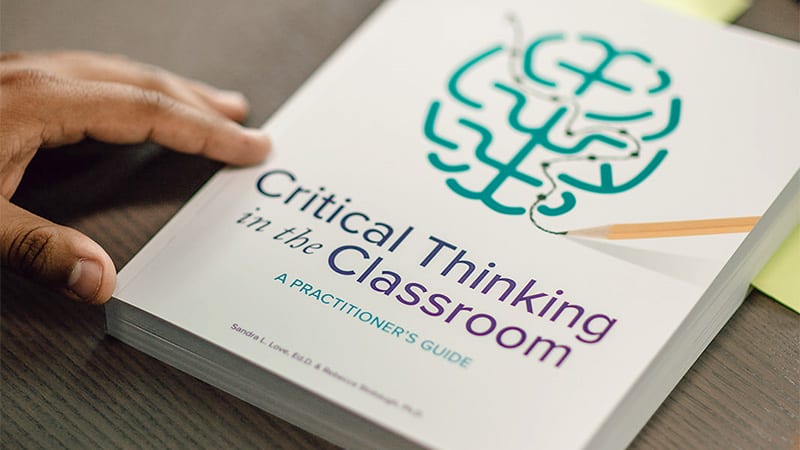
Critical Thinking in the Classroom is a practitioner’s guide that shares the why and the how for building critical thinking skills in K-12 classrooms. It includes over 100 practical tools and strategies that you can try in your classroom tomorrow!
Get Your Copy of Critical Thinking in the Classroom
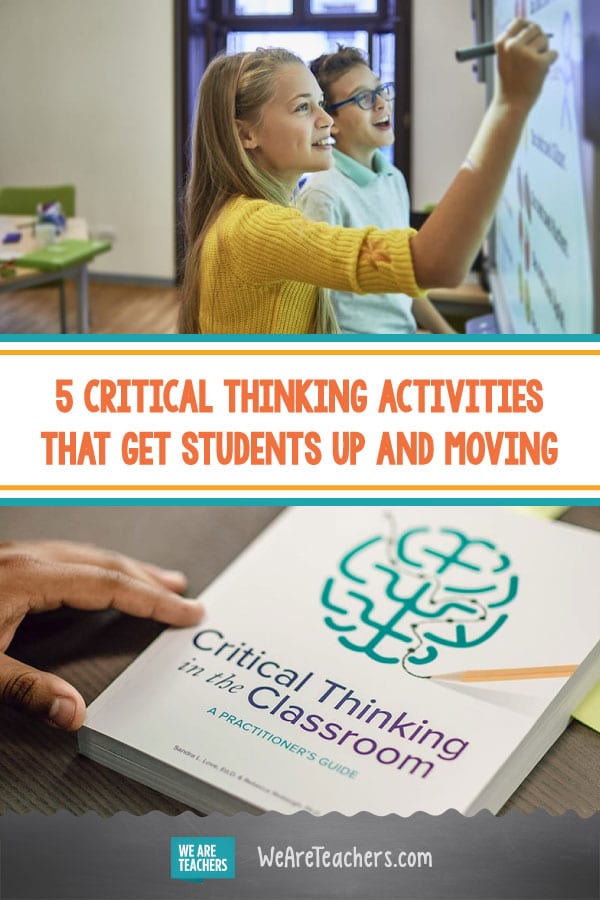
You Might Also Like

5 Activities To Help Students Improve Their Working Memory
Bell ringers that focus on what your students need most. Continue Reading
Copyright © 2023. All rights reserved. 5335 Gate Parkway, Jacksonville, FL 32256

10 Excellent Short Stories for High School Students
Nikki DeMarco
The inimitable Nikki DeMarco is as well-traveled as she is well-read. Being an enneagram 3, Aries, high school librarian, makes her love for efficiency is unmatched. She lives in Richmond, Virginia, and is passionate about helping teens connect to books. Nikki has an MFA in creative writing, is a TBR bibliologist, and writes for Harlequin, Audible, Kobo, and MacMillan. Since that leaves her so much time, she’s currently working on writing a romance novel, too. Find her on all socials @iamnikkidemarco ( Instagram , Twitter , Threads )
View All posts by Nikki DeMarco
As a high school English teacher, the quest to keep my curriculum relevant to my students is ongoing. I’m always on the lookout for new stories or authors that I can bring in the classroom to ensure that it’s something my students haven’t read or seen before. Of course, I’m constantly trying to change the activities to make them develop critical thinking skills. But if those activities are based around the same old tired (read: white) short stories for high school students, it often doesn’t matter how fun or innovative the activity is, the students are not interested because they can’t relate.
Why are new short stories for high school students important?
In education, we are constantly selling the idea of acquiring knowledge. Teens’ attention is being fought over by exponentially more distractions than they were even as recently as ten years ago. Instead of complaining about “kids these days” and taking the “when I was your age” stance, educators need to learn to adapt and offer students high interest stories that they can use to develop their own ideas.
I can already hear the arguments coming against this. Classics are classic for a reason. Students should be held to a high standard. I already have a year’s worth of lesson plans around The Great Gatsby and To Kill a Mockingbird and am over-worked, and now you want me to change?
I get it. I’m also fighting fatigue and burnout. So keep teaching some classics if you think they are excellent works of literature that you’d hate to have students miss out on, but trying pair each in a text set with a contemporary short story with similar themes. I’m not saying that adapting means less rigor or holding students to lower standards. Kids are smart and capable. Adding in texts from diverse perspectives will only enhance the breadth of work students are exposed to, making them draw connections from their own lives and perspectives outside their own, increasing critical thinking skills. Students today also have their finger on the pulse of the world in a way most educators can’t relate to from when they were the same age. We are doing them a disservice by not acknowledging that in how we teach. We also are being willfully ignorant if we only assign “the classics” and believe the students are reading them in their entirety. Come on, y’all. We were students once, too, and know a lot of these kids aren’t starting, much less finishing, the stories we assign.
One thing I’m doing to help my students buy into reading the whole story is to make sure I have stories with people who look like them. Also, I’m making sure they have stories full of people who don’t look like them. Teenagers don’t have much life experience yet, and that makes their world views narrow because the world they live in is small, many never having left the state where they were born. Exposing them to stories from different authors of different races, religions, and cultures helps them see beyond their school district. Yes, yes, they have the internet at their fingertips and could search for these things, but the algorithm learns them quickly and continues to feed them more of the like to keep views up and keep them engaged. As teachers, we need to learn to keep them engaged by doing just the opposite.
Finding diverse short stories for high school is daunting. Just typing “contemporary short stories for high school” into Google brings back 143,000,000 results. Most of us are already working long beyond our contracted hours, and now I’m asking you to spend even more time reading stories that might not even be good or usable in class?
Don’t worry. I have some lists of short stories for high school students to get you started. The titles below are a jumping off point, not a comprehensive list. Note: Some of these stories have strong language.
Relationships
- Weight by Dhonielle Clayton
- Show Me Yours by Richard Van Camp
- Goat Mouth by Pamela Mordecai
- After ‘While by Cherie Dimaline
- Bliss by Sofia Mostaghimi
- Pact by Mark Oshiro
Coming-of-Age
- Origin of the Lullaby by Canisia Lubrin
- Tequila by Laura Gonzalez
- One True Love by Melinda Lo
- Valedictorian by N.K. Jemisin
Another tip I wanted to mention, but doesn’t fit neatly in the above themes, is that you can find collections of short stories online by different racial or cultural groups by switching up your default search terms. For example, Viewfinders: 10 Y.A. Novelist Spin Fiction from Vintage Photos from The New York Times came up when I searched “short stories for asian teens” but it took a little digging and clicking through to find. This collection features authors such as Malinda Lo, Soman Chainani, Marie Lu, Sabaa Tahir, and David Yoon.
Please, go back to your lesson plans and ask yourself these questions: Who’s missing? Who’s not represented? Do I have a student in my class who can’t see themselves in anything I’m teaching all year? Then find the story for that kid. That’s how we reach them, by showing them that we see them.
Here are some other resources from Book Riot that can help you on your resource search as well:
- YA Short Stories
- Find Free Short Stories
- Free Short Stories Online
- Short Story Examples in (Almost) Every Genre

You Might Also Like

Academia.edu no longer supports Internet Explorer.
To browse Academia.edu and the wider internet faster and more securely, please take a few seconds to upgrade your browser .
Enter the email address you signed up with and we'll email you a reset link.
- We're Hiring!
- Help Center

TEACHING CRITICAL THINKING SKILLS THROUGH THE USE OF SHORT STORIES

The term "critical thinking" has been defined by numerous scholars in a variety of ways and there is no widely accepted standard definition. It is believed that using critical thinking skills in English classes enhances students' performance. The purpose of this study is to tackle whether critical thinking skills can be enhanced through short story teaching or not. Two high school classes which participated in the study were assigned into two experimental groups, control group and intervention group, and were given Cornell Critical Thinking Test, Level X both as pretest and posttest. In the intervention group, students dwelt upon four short stories through critical thinking skills. Their structured class discussions paved the way for them to be exposed to the critical thinking use through Mr. Loveday’s Little Outing by Evelyn Waugh, Miss Brill and The Fly by Katherine Mansfield, and A Family Supper by Kazuo Ishiguro. The results of the study highlight the importance of the synergy between critical thinking strategy use and short story teaching.
Related Papers
Dr Mukti Thapaliya
This paper is an attempt to reveal the effectiveness of Critical Thinking (CT) strategies in teaching English literature in general and short stories in particular. Critiquing against the conventional teacher dominated practices in English Language Teaching (ELT) in Nepal, this also offers a set of critical thinking strategies in order to make it more participatory and effective. This heavily draws on my experience of exploiting those techniques while teaching short stories in EFL/ESL classroom in Nepal.
JULISSA MARIBEL IÑIGUEZ AÑAZCO
International Journal of Linguistics
iman alizadeh
Ajeng Meidina Fadhillah
This article reports a research on embedding critical thinking through critical reading in teaching narrative text to junior high school students. The research was aimed to find out whether or not critical reading strategies can improve students’ critical thinking skills and how critical reading strategies help students to think critically in reading narrative text. Thirty five of eight graders in one of junior high schools in West Bandung were involved in this study. This study employed mixed methods as the methodology. The data were gained through pre-test, post-test, classroom observation and interview. The findings revealed that there were 18 of 35 students (51%) who made a high improvement of their critical thinking skills. It means that critical reading strategies were considered could improve students’ critical thinking skills in reading narrative text. In addition, the five critical reading strategies as proposed by Sousa (2004) and Winston Salem State University (2013) name...
Iroda Abduazizova
The article defines the concept “critical thinking” and reveals the effectiveness of critical thinking (CT) strategies through short stories in teaching English as a foreign language. According to the results of the study, the authors propose a certain set of critical thinking strategies to encourage students’ active involvement and effective use of teaching foreign languages in higher education.
I Gusti Ayu Gde sosiowati
Richards (2006) states that the purpose of learning language is to master the communicative competence, meaning that by the end of the leaming process, the students should be able to produce proper language in any genre and in any situation. However, that competence alone, without accompanied by the ability to perform critical thinking will end in the conversation talking about explicit information only. It can not be denied that understanding the implicit infbrmation r'vill be challenging and making the conversation interesting. Halpern (cited on l5 March 2015) states that critical thinking refers to the use of cognitive skills or strategies that increase the probability of a desirable outcome. It is the kind of thinking which is involved in solving problems- formulating inferences, calculating likelihoods, and making decisions.The purpose of this article is to show that literary work can be used to develop critical thinking and at the same time is able to improve the students&...
Judith Langer
Advances in Language and Literary Studies
Jayakaran Mukundan
Cross-cultural Communication
maisoun Abujodah
Advances in social science, education and humanities research
Vera Syamsi
RELATED PAPERS
Miguelangel Rojas Hernandez
Irma Fitriana
European Journal of Business and Management
Jane N Were
Margaret Lloyd
European Journal of Social Psychology
Claudio Torres
Journal of Abnormal Child Psychology
Paul Williamson
Poznańskie Studia Teologiczne
Tomasz Nawracała
2019 IEEE 19th International Conference on Software Quality, Reliability and Security Companion (QRS-C)
Yashwant Malaiya
Anuario Historia Regional Y De Las Fronteras
Aceneth Perafán Cabrera
Luciana Leonidas
Canadian journal of kidney health and disease
Leah Getchell
diah gusrayani
Carlos Alberto Rojas Cruz
pide.org.pk
Muhammad Zahid Javid
Optics Communications
Al-Fikr: Jurnal Pendidikan Islam
Muhammad Fairuz Adhimul Arifin
The Journal of Immunology
fyaz Ismail
International Journal of Climatology
Amadou Gaye
Journal of iberian geology: an international publication of earth sciences
Jose Sandoval
2021 14th IEEE Conference on Software Testing, Verification and Validation (ICST)
khaled ahmed
Journal of Dairy Research
Szabolcs Tóth
Primerjalna književnost
Sabina Osmanovic
Elizabeth Fortunato
hyutrTT hytutr
RELATED TOPICS
- We're Hiring!
- Help Center
- Find new research papers in:
- Health Sciences
- Earth Sciences
- Cognitive Science
- Mathematics
- Computer Science
- Academia ©2024

A Crash Course in Critical Thinking
What you need to know—and read—about one of the essential skills needed today..
Posted April 8, 2024 | Reviewed by Michelle Quirk
- In research for "A More Beautiful Question," I did a deep dive into the current crisis in critical thinking.
- Many people may think of themselves as critical thinkers, but they actually are not.
- Here is a series of questions you can ask yourself to try to ensure that you are thinking critically.
Conspiracy theories. Inability to distinguish facts from falsehoods. Widespread confusion about who and what to believe.
These are some of the hallmarks of the current crisis in critical thinking—which just might be the issue of our times. Because if people aren’t willing or able to think critically as they choose potential leaders, they’re apt to choose bad ones. And if they can’t judge whether the information they’re receiving is sound, they may follow faulty advice while ignoring recommendations that are science-based and solid (and perhaps life-saving).
Moreover, as a society, if we can’t think critically about the many serious challenges we face, it becomes more difficult to agree on what those challenges are—much less solve them.
On a personal level, critical thinking can enable you to make better everyday decisions. It can help you make sense of an increasingly complex and confusing world.
In the new expanded edition of my book A More Beautiful Question ( AMBQ ), I took a deep dive into critical thinking. Here are a few key things I learned.
First off, before you can get better at critical thinking, you should understand what it is. It’s not just about being a skeptic. When thinking critically, we are thoughtfully reasoning, evaluating, and making decisions based on evidence and logic. And—perhaps most important—while doing this, a critical thinker always strives to be open-minded and fair-minded . That’s not easy: It demands that you constantly question your assumptions and biases and that you always remain open to considering opposing views.
In today’s polarized environment, many people think of themselves as critical thinkers simply because they ask skeptical questions—often directed at, say, certain government policies or ideas espoused by those on the “other side” of the political divide. The problem is, they may not be asking these questions with an open mind or a willingness to fairly consider opposing views.
When people do this, they’re engaging in “weak-sense critical thinking”—a term popularized by the late Richard Paul, a co-founder of The Foundation for Critical Thinking . “Weak-sense critical thinking” means applying the tools and practices of critical thinking—questioning, investigating, evaluating—but with the sole purpose of confirming one’s own bias or serving an agenda.
In AMBQ , I lay out a series of questions you can ask yourself to try to ensure that you’re thinking critically. Here are some of the questions to consider:
- Why do I believe what I believe?
- Are my views based on evidence?
- Have I fairly and thoughtfully considered differing viewpoints?
- Am I truly open to changing my mind?
Of course, becoming a better critical thinker is not as simple as just asking yourself a few questions. Critical thinking is a habit of mind that must be developed and strengthened over time. In effect, you must train yourself to think in a manner that is more effortful, aware, grounded, and balanced.
For those interested in giving themselves a crash course in critical thinking—something I did myself, as I was working on my book—I thought it might be helpful to share a list of some of the books that have shaped my own thinking on this subject. As a self-interested author, I naturally would suggest that you start with the new 10th-anniversary edition of A More Beautiful Question , but beyond that, here are the top eight critical-thinking books I’d recommend.
The Demon-Haunted World: Science as a Candle in the Dark , by Carl Sagan
This book simply must top the list, because the late scientist and author Carl Sagan continues to be such a bright shining light in the critical thinking universe. Chapter 12 includes the details on Sagan’s famous “baloney detection kit,” a collection of lessons and tips on how to deal with bogus arguments and logical fallacies.

Clear Thinking: Turning Ordinary Moments Into Extraordinary Results , by Shane Parrish
The creator of the Farnham Street website and host of the “Knowledge Project” podcast explains how to contend with biases and unconscious reactions so you can make better everyday decisions. It contains insights from many of the brilliant thinkers Shane has studied.
Good Thinking: Why Flawed Logic Puts Us All at Risk and How Critical Thinking Can Save the World , by David Robert Grimes
A brilliant, comprehensive 2021 book on critical thinking that, to my mind, hasn’t received nearly enough attention . The scientist Grimes dissects bad thinking, shows why it persists, and offers the tools to defeat it.
Think Again: The Power of Knowing What You Don't Know , by Adam Grant
Intellectual humility—being willing to admit that you might be wrong—is what this book is primarily about. But Adam, the renowned Wharton psychology professor and bestselling author, takes the reader on a mind-opening journey with colorful stories and characters.
Think Like a Detective: A Kid's Guide to Critical Thinking , by David Pakman
The popular YouTuber and podcast host Pakman—normally known for talking politics —has written a terrific primer on critical thinking for children. The illustrated book presents critical thinking as a “superpower” that enables kids to unlock mysteries and dig for truth. (I also recommend Pakman’s second kids’ book called Think Like a Scientist .)
Rationality: What It Is, Why It Seems Scarce, Why It Matters , by Steven Pinker
The Harvard psychology professor Pinker tackles conspiracy theories head-on but also explores concepts involving risk/reward, probability and randomness, and correlation/causation. And if that strikes you as daunting, be assured that Pinker makes it lively and accessible.
How Minds Change: The Surprising Science of Belief, Opinion and Persuasion , by David McRaney
David is a science writer who hosts the popular podcast “You Are Not So Smart” (and his ideas are featured in A More Beautiful Question ). His well-written book looks at ways you can actually get through to people who see the world very differently than you (hint: bludgeoning them with facts definitely won’t work).
A Healthy Democracy's Best Hope: Building the Critical Thinking Habit , by M Neil Browne and Chelsea Kulhanek
Neil Browne, author of the seminal Asking the Right Questions: A Guide to Critical Thinking, has been a pioneer in presenting critical thinking as a question-based approach to making sense of the world around us. His newest book, co-authored with Chelsea Kulhanek, breaks down critical thinking into “11 explosive questions”—including the “priors question” (which challenges us to question assumptions), the “evidence question” (focusing on how to evaluate and weigh evidence), and the “humility question” (which reminds us that a critical thinker must be humble enough to consider the possibility of being wrong).

Warren Berger is a longtime journalist and author of A More Beautiful Question .
- Find a Therapist
- Find a Treatment Center
- Find a Psychiatrist
- Find a Support Group
- Find Teletherapy
- United States
- Brooklyn, NY
- Chicago, IL
- Houston, TX
- Los Angeles, CA
- New York, NY
- Portland, OR
- San Diego, CA
- San Francisco, CA
- Seattle, WA
- Washington, DC
- Asperger's
- Bipolar Disorder
- Chronic Pain
- Eating Disorders
- Passive Aggression
- Personality
- Goal Setting
- Positive Psychology
- Stopping Smoking
- Low Sexual Desire
- Relationships
- Child Development
- Therapy Center NEW
- Diagnosis Dictionary
- Types of Therapy

Understanding what emotional intelligence looks like and the steps needed to improve it could light a path to a more emotionally adept world.
- Coronavirus Disease 2019
- Affective Forecasting
- Neuroscience
critical thinking stories
All Formats
Resource types, all resource types.
- Rating Count
- Price (Ascending)
- Price (Descending)
- Most Recent
Critical thinking stories
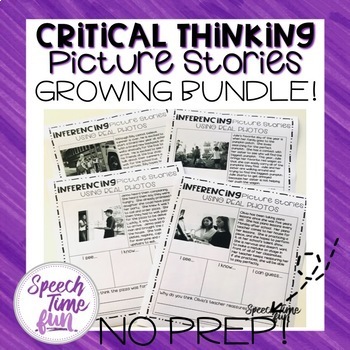
Critical Thinking Picture Stories Worksheets Using Real Photos Growing Bundle

The Little Match Girl -- ESL Beginner Story -- Vocab, Lit, Critical Thinking
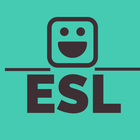
- Easel Activity
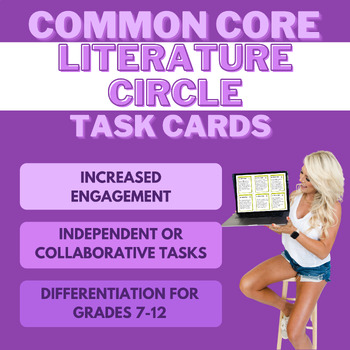
24 Literature Circle Task Cards - Any Novel or Story - Critical Thinking Skills

CALDECOTT BOOK ACTIVITIES Story Sleuths I Literature Extention Critical Thinking

Absurdities: Critical Thinking Skills | Silly Stories | Short Passages | Fun

Snack Attack: making inferences, story grammar, critical thinking

The Monkey's Paw: 6 Critical Thinking Lesson Plans ( Story Included)

Literature Task Cards - ANY Story : Cite Evidence, Theme, Critical Thinking
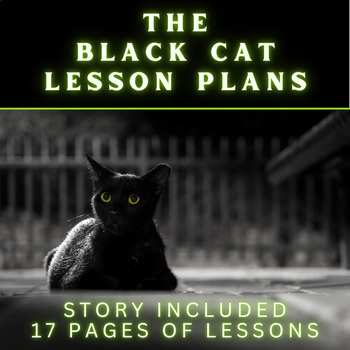
The Black Cat by Edgar Allan Poe: 6 Critical Thinking Lesson Plans (w/ Story )
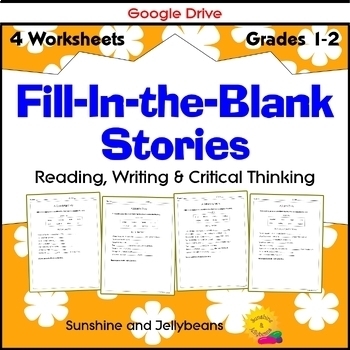
Fill-In-The-Blank Stories - Reading/Writing/ Critical Thinking - Grade 1-2 Google
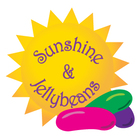
- Google Slides™

Questions Short Stories : Enhancing Critical Thinking Skills for for 6th grade

Levels of Questions using the Story of Cinderella: Critical Thinking Activity

Close Reading, Critical Thinking Activities for Any Short Story

Questions Short Stories : Enhancing Critical Thinking Skills for for 4th grade
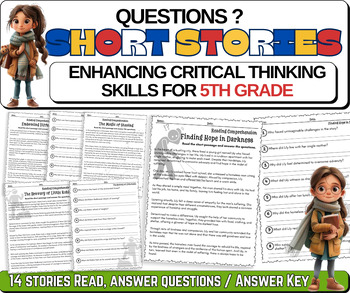
Questions Short Stories : Enhancing Critical Thinking Skills for for 5th grade
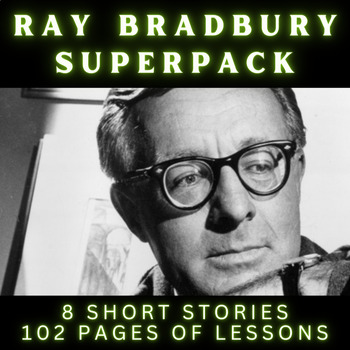
Ray Bradbury Superpack: 8 Stories & 102 Pages of Critical Thinking Lessons

Questions Short Stories : Enhancing Critical Thinking Skills for 1st-2nd Graders
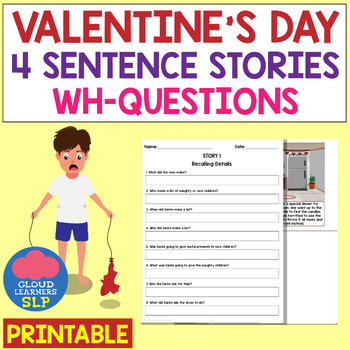
4 Sentence Stories (Recalling Details and Critical Thinking ) | Valentine's Day

Hearth & Story Brain Food | Homeschool Critical Thinking
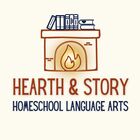
Thanksgiving Theme: Social Stories - Recalling Details and Critical Thinking
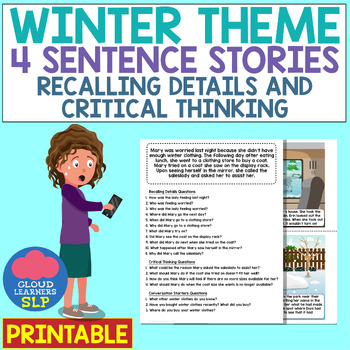
Winter Theme : 4 Sentence Stories (Recalling Details and Critical Think - Vol. 1

Critical Thinking Short Story Discussion Prompts: Socratic Smackdown
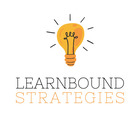
Christmas Theme : 4 Sentence Stories (Recalling Details and Critical Thinking )

Tell Me a Story : Storybooks That Teach Critical Thinking for Grades PreK-1

- We're hiring
- Help & FAQ
- Privacy policy
- Student privacy
- Terms of service
- Tell us what you think
- Digital Offerings
- Biochemistry
- College Success
- Communication
- Electrical Engineering
- Environmental Science
- Mathematics
- Nutrition and Health
- Philosophy and Religion
- Our Mission
- Our Leadership
- Accessibility
- Diversity, Equity, Inclusion
- Learning Science
- Sustainability
- Affordable Solutions
- Curriculum Solutions
- Inclusive Access
- Lab Solutions
- LMS Integration
- Instructor Resources
- iClicker and Your Content
- Badging and Credidation
- Press Release
- Learning Stories Blog
- Discussions
- The Discussion Board
- Webinars on Demand
- Digital Community
- Macmillan Learning Peer Consultants
- Macmillan Learning Digital Blog
- Learning Science Research
- Macmillan Learning Peer Consultant Forum
- English Community
- Achieve Adopters Forum
- Hub Adopters Group
- Psychology Community
- Psychology Blog
- Talk Psych Blog
- History Community
- History Blog
- Communication Community
- Communication Blog
- College Success Community
- College Success Blog
- Economics Community
- Economics Blog
- Institutional Solutions Community
- Institutional Solutions Blog
- Handbook for iClicker Administrators
- Nutrition Community
- Nutrition Blog
- Lab Solutions Community
- Lab Solutions Blog
- STEM Community
- STEM Achieve Adopters Forum
- Contact Us & FAQs
- Find Your Rep
- Training & Demos
- First Day of Class
- For Booksellers
- International Translation Rights
- Permissions
- Report Piracy
Digital Products
Instructor catalog, our solutions.
- Macmillan Community
- 7 Ways AI can Impact Students’ Critical Thinking S...
7 Ways AI can Impact Students’ Critical Thinking Skills

- Subscribe to RSS Feed
- Printer Friendly Page
- Report Inappropriate Content
- Classroom Dynamics
- critical thinking
- Accessibility 3
- Author Spotlight 1
- Diversity and Inclusion 1
- 1-800-611-FILM
- Teens & Kids Camps
Summer Programs for Kids: Advantages of Immersive Camps in the Arts
As the end of the school year gets closer and closer, a lot of parents have the same question – what does the summer have in store? There are more opportunities than ever for kids to get involved with new hobbies and skills during the summer break , especially at New York Film Academy! In our immersive summer camps, students can choose from a selection of programs in film, media, and the performing arts.
From hands-on filmmaking camps to acting camps designed to enhance audition techniques to learning how to build your own game, we can’t wait to show you what’s in store at NYFA this summer!
NYFA’s summer programs take the traditional camp experience to another level, allowing kids to make new friends while creating and performing in their own films, video games, musicals, and original content. Students can choose from summer camps at our New York, Los Angeles, and Miami campuses, some of the best cities in the world for film, media, and the performing arts.
There are a lot of advantages to attending our immersive camps, including building skills and experience in:
Media Literacy
From social media to streaming, in today’s digital age, it’s incredibly beneficial for kids to understand how media is created and consumed. NYFA’s filmmaking summer camps provide kids with hands-on experience in filmmaking, content creation, and media production, helping them learn every step of the process as students write, shoot, direct, and edit their films .
Our level-one programs allow students to delve into the fundamentals of cinematic storytelling, while our level-two camps, where students further expand their skills with additional filmmaking techniques and the creation of additional short films. In an interview with NJ.com, Director of Youth Admissions John Sagona attributed the success of the kids camps to NYFA’s learn-by-doing approach .
“What I love about these programs is that we teach the kids in the same way we teach our adults — with industry-leading instructors, professional-grade equipment, and real-world experience,” Sagona said.
Summer 2024: Level One, 1-Week Filmmaking , 2-Week Filmmaking . Level Two: 1-Week Filmmaking , 2-Week Filmmaking
Confidence Building
NYFA’s acting for film camps are great for kids who love to perform, fostering self-esteem and confidence on camera. Our hands-on projects and exercises, taught by industry professionals, help students enhance their acting skills and gain practical experience in public speaking and presentation. After students complete our level-one acting camps, they’re eligible to return to continue honing their craft in our level-two courses, which expand on their natural skills and learned techniques. NYFA camp alums have even gone on to star in hit television shows such as Bad Sisters (Eve Hewson) and The White Lotus (Aubrey Plaza).
Summer 2024: Level One, 1-Week Acting for Film , 2-Week Acting for Film . Level Two: 1-Week Acting for Film , 2-Week Acting for Film
Observation and Attention to Detail
Photography encourages kids to observe their surroundings and pay attention to details they might otherwise overlook. This heightened sense of observation helps develop their visual literacy and appreciation for the beauty and diversity of the world around them. Additionally, in NYFA’s photography camps , kids can develop essential technical skills related to operating cameras, composing shots, and utilizing editing software.
Summer 2024: Level One, 1-Week Photography , 2-Week Photography
Problem-solving and Critical Thinking
From Monsters at Work 2 (Tom Kanter, NYFA storyboard instructor, worked on this season) to Hilda to Scott Pilgrim Takes Off, animation continues to prove itself as a compelling and innovative way to tell stories . In NYFA’s 3D Animation summer camp, kids develop essential problem-solving and critical thinking skills as they learn to animate characters and scenes.
From solving technical challenges to making artistic decisions, animation camps encourage kids to think creatively and analytically.
Summer 2024: Level One, 1-Week 3D Animation , 2-Week 3D Animation
Self-Expression
NYFA’s musical theatre camps at our New York campus allow kids to express themselves artistically and emotionally through storytelling, music, and movement. By exploring different characters and roles under the guidance of professionals with Broadway and Off-Broadway experience, kids learn to tap into their emotions and convey them effectively to an audience. Through rehearsals and performances, kids can gain confidence in their abilities and learn to express themselves creatively on stage.
Summer 2024: Level One, 1-Week Musical Theatre , 3-Week Musical Theatre
Fun and Engagement
NYFA’s game design camps offer a fun and engaging experience for kids passionate about video games and technology . Whether they’re designing characters, crafting levels, or playtesting their creations, students immerse themselves in the world of game development and make lasting memories with peers who share their interests. Throughout the camps, students study art direction, game and sound design, and coding, creating their unique content.
Summer 2024: Level One, 1-Week Game Design , 2-Week Game Design
Explore NYFA’s Summer Programs for Kids
At NYFA, kids can pursue their passion for film, media, and performing arts in a nurturing and inclusive setting. Through dynamic activities, kids aged 10-13 immerse themselves in games, exercises, group projects, and assignments under the guidance of seasoned industry professionals. Ideal for students with a penchant for storytelling and creativity, our programs foster the expansion of their natural talents while providing a framework for acquiring new skills.
Ready to learn more about our summer programs? Explore our camps today!
School resource officer teaches students critical thinking skills for police interactions

SOUTH BEND — A decade ago, Jalen Lee played linebacker and running back for Washington High School 's football team.
Now, he patrols his alma mater's halls as its School Resource Officer, which he has done for the past two years.
But he wants to be more than a cop to today's students: He wants to be a role model and teacher to them, just as Washington's SRO was to him when he was a Panther.
Lee, who attended Washington from 2012-2016, looks up to the past SROs as “giants with a magnitude and impact that can’t be measured,” he said.
“Washington High School has a long and rich history of School Resource Officers,” he said. “It’s a story that’s not really told. It’s my story.”
And he's put that story, from what he learned from the police officers he knew in his youth to what he learned during his first two years as a patrol officer with the South Bend Police Department , into his second book, “ Street Skills: a guide to master interactions with the police .”
Specifically, Lee names Eric Crittendon, David Herron, Brian Kendall, Antown Jones, Tomar Thomas and Anthony Pearson as officers who all influenced him and helped shape his career trajectory. He met them working with the Police Athletic League as a student.
“If it wasn’t for my School Resource Officer,” Lee said, referring to Anthony Pearson, “I probably would have never become a police officer.”
Pearson remembers Lee as a bright young man who made his policing stronger. It was their interactions, Pearson said, that gave Lee an insight into what police do.
“School Resource Officers have the power to change student lives,” Pearson said. “I think this is unlike any other position as a police officer, because you’re strictly dealing with minds that are moldable.”
Pearson, who has been working with the SBPD for over 20 years and has been in the South Bend Community School Corporation since 2004, he estimated, working at Washington, Riley High School and, currently, Adams High School , has seen previous students, like Lee, now take their place in South Bend’s community as teachers, police officers and parents.
“Our conversations helped me be a better mentor because I had someone who was truly interested in what I did for a living,” Pearson said. “It was a no-brainer to jump on the train with him and push him forward to be doing even greater things that he’s doing now.”
From football to public speaking
Those “greater things” for Lee included attending Ball State University , where he played football as a slot receiver. However, Lee’s trajectory shifted when he was cut from the team his freshman year.
“After that, I had no idea what I wanted to do,” Lee said. “I had been an athlete my whole life, and at the time, that was a key to my identity.”
With football being “stripped away,” he had to find his next step. “What else do you do besides being a top athlete?” he asked.
Lee leaned into speaking, majoring in communications and keynote speaking and criminal justice. He wrote his first book while attending Ball State. During his junior and senior years, he averaged 150 speaking engagements, speaking in front of people and crafting easily digestible messages, he said.
“Being from around here, I never heard of anyone who was a professional speaker and who did it as their job. It was an amazing time,” he said, “It showed me what I wanted to do.”
Speaking engagements halted as the COVID-19 pandemic hit during Lee’s senior year. He had a full schedule of speaking engagements in 2020, but within a few weeks, they were canceled.
Lee came home.
“I utilized the second half of my degree and went into law enforcement,” he said.
Lee joined the South Bend Police Department in 2020, serving in the patrol division for his first two years.
After being on the streets and making a lot of arrests, he said, he began to question whether that was the right role for him within the department,
Incarcerations are a part of the job of being an officer, Lee said, but in the schools, there’s less of it.
“The goal of an SRO is not to arrest kids,” he said. “We exercise discretion as an educator. It’s about working with these kids as we educate them about the decisions they're making and the consequences that come with those decisions.”
In 2022, Lee decided to return to Washington, which had been without an SRO for two years, and serve in the school. To him, it felt right.
“This is my place,” he said. “This is where I’m from.”
A return to writing and speaking
Students brought new life to his creative side. They reinvigorated him, he said, and brought back the fire of speaking and writing, which led to his second book, “Street Skills: a guide to master interactions with the police,” released on Feb. 11.
“I see the need of the students, because they come to me with that need,” Lee said.
He provides scenario-based practices, based on his own experiences as an officer and questions he’s received from students he interacts with each day.
“My experience and the things that I see are mine,” he said.
The book takes the reader through five of the 10 amendments in the Bill of Rights: freedoms, petitions and assembly (Amendment 1), right to bear arms (Amendment 2), searches and arrests (Amendment 4), rights in criminal cases (Amendment 5), and right to a fair trial (Amendment 6).
The subtitle of the book, to master interactions with the police, Lee said, is so much more.
“There’s a lot our kids are dealing with,” he said.
Some schools might be dealing with fighting or underage alcohol abuse, Lee said, adding that the program can be shaped and molded per the needs of each school district.
In addition to his book, Lee wrote a workbook to educate students about the criminal justice system. Through his company, Jalen Lee & Associates , he does public speaking within schools.
He’s in negotiations with the South Bend Community School Corporation and Penn-Harris-Madison, he said, to provide his product and services to schools.
“Some schools are not equipped to teach these topics,” he said. “They have their standardized curriculum and a lot of these topics that we talk about don't really fall under the curriculum you need to graduate.”
For him, it’s important that students practice real life situations, so he provides a ratio of 30% content to 70% scenarios.
"The scenarios are the key," he said, "You can teach the content, but you have to make it real for students."
Scenario-based education
Lee said scenarios get students’ minds working and allow them to think more critically. This, he said, leads students to feeling more equipped.
“We want to focus on students’ decision making and leadership skills,” Lee said. “It’s not necessarily about teaching students what their rights are but how to apply them.”
From his past interactions on patrol, Lee said, he learned that “if anxiety doesn’t get them, fear will. If fear doesn’t get them, then they’re overthinking it. When you feel trapped, you can’t listen to what I’m telling you to do.”
He wants to pull students out of that frame of thinking by teaching them that they are allowed to think and respond to what’s happening.
“Most times, if you can critically think, you can get through most situations. I’ve been in some of the most hostile situations and some of the least hostile,” he said. “In all of those situations, what really separates those is your ability to think and process.”
Lee referenced his experience of pulling over a young African American male in a traffic stop in Chapter 5 of his book.
“After speaking with the young man, he explained that he had never been pulled over before and he was extremely nervous to the point he began to cry,” Lee wrote in “Street Skills.”
“He was literally shaking,” Lee said. “He paused me. This is not how our relationship is supposed to be.”
Lee said when an officer pulls over a car, they’re “in a position of dominance,” he said. “When I saw the emotions he was dealing with, I first asked myself, ‘What can I say to de-escalate him?’”
He asked the young man to step out of the car and explained that being stopped for a minor traffic offense "is not the end of the world," even though he understands why people might view it as such.
“I’m not here to get you, rough you up, mistreat you or talk down to you,” Lee said he told the scared driver that day. “That’s why I pulled you out of the car, because I wanted to talk to you on level ground, eye-to-eye.”
Lee said he took time to break down barriers between them.
“I knew at this moment," he wrote in "Street Skills," "I was given the power to change his reality and perception of the police. … I explained that the police are public servants at the core. We are here to serve, protect, and improve quality of life, not harass, abuse, or cause fear. I understand how we’ve gotten to this point where there’s an unhealthy fear toward police. I can’t change the history of the police and the public, but I can be intentional about how I treat the people I deal with daily to continually build the public’s trust in the police.”
“People view the police, sometimes, as this bigger-than-life person, or creature,” he said, “as a thing that’s ever-knowing or ever-powerful, but that’s not the reality. A lot of police interactions that we’ve seen in our society that have gone wrong, is because, most times, that police officer has human characteristics. Fear. Anxiety. Maybe, they didn’t make the best decision in a split second,” he said.
"Police are human,” Lee said but added that he doesn’t speak for anyone other than himself.
He recalled getting pulled over when he was 16 and 17 years old. “I’m not naïve to why,” Lee said. “I’m a kid who grew up here on the west side.”
However, contrary to the man he pulled over, Lee didn’t share the same perception of law enforcement.
“I knew police officers,” he said, referring again to the rich history of a police presence at Washington High School. “Anthony Pearson showed me that all police weren’t like that.”
In his interaction with the young man, Lee endeavored “to show him that all police aren’t bad.”
In his time with SBPD, working with everyone, he said, “It has nothing to do with skin tone. Good police officers come in all shapes, forms or sizes. There is no mold. It’s all based on who you are. What do you stand on? What are some of the morals and pillars that you lead your life with?”
Email Tribune staff writer Camille Sarabia at [email protected] .
Featured Topics
Featured series.
A series of random questions answered by Harvard experts.
Explore the Gazette
Read the latest.

Harvard announces return to required testing

Co-chairs of task forces share updates on community engagement
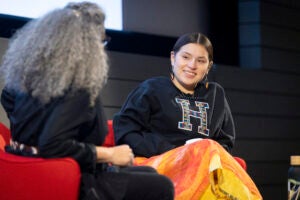
For all the other Willie Jacks
Exploring generative ai at harvard.
Jessica McCann
Harvard Correspondent

Leaders weigh in on where we are and what’s next
The explosion of generative AI technology over the past year and a half is raising big questions about how these tools will impact higher education. Across Harvard, members of the community have been exploring how GenAI will change the ways we teach, learn, research, and work.
As part of this effort, the Office of the Provost has convened three working groups . They will discuss questions, share innovations, and evolve guidance and community resources. They are:
- The Teaching and Learning Group , chaired by Bharat Anand , vice provost for advances in learning and the Henry R. Byers Professor of Business Administration at Harvard Business School. This group seeks to share resources, identify emerging best practices, guide policies, and support the development of tools to address common challenges among faculty and students.
- The Research and Scholarship Group , chaired by John Shaw , vice provost for research, Harry C. Dudley Professor of Structural and Economic Geology in the Earth and Planetary Sciences Department, and professor of environmental science and engineering in the Paulson School of Engineering and Applied Science. It focuses on how to enable, and support the integrity of, scholarly activities with generative AI tools.
- T he Administration and Operations Group , chaired by Klara Jelinkova , vice president and University chief information officer. It is charged with addressing information security, data privacy, procurement, and administration and organizational efficiencies.

Klara Jelinkova, Bharat Anand, and John Shaw.
Photos by Kris Snibbe/Harvard Staff Photographer; Evgenia Eliseeva; and courtesy of John Shaw
The Gazette spoke with Anand, Shaw, and Jelinkova to understand more about the work of these groups and what’s next in generative AI at Harvard.
When generative AI tools first emerged, we saw universities respond in a variety of ways — from encouraging experimentation to prohibiting their use. What was Harvard’s overall approach?
Shaw: From the outset, Harvard has embraced the prospective benefits that GenAI offers to teaching, research, and administration across the University, while being mindful of the potential pitfalls. As a University, our mission is to help enable discovery and innovation, so we had a mandate to actively engage. We set some initial, broad policies that helped guide us, and have worked directly with groups across the institution to provide tools and resources to inspire exploration.
Jelinkova: The rapid emergence of these tools meant the University needed to react quickly, to provide both tools for innovation and experimentation and guidelines to ensure their responsible use. We rapidly built an AI Sandbox to enable faculty, students, and staff to experiment with multiple large language models in a secure environment. We also worked with external vendors to acquire enterprise licenses for a variety of tools to meet many different use cases. Through working groups, we were able to learn, aggregate and collate use cases for AI in teaching, learning, administration, and research. This coordinated, collective, and strategic approach has put Harvard ahead of many peers in higher education.
Anand: Teaching and learning are fundamentally decentralized activities. So our approach was to ask: First, how can we ensure that local experimentation by faculty and staff is enabled as much as possible; and second, how can we ensure that it’s consistent with University policies on IP, copyright, and security? We also wanted to ensure that novel emerging practices were shared across Schools, rather than remaining siloed.
What do these tools mean for faculty, in terms of the challenges they pose or the opportunities they offer? Is there anything you’re particularly excited about?
Anand: Let’s start with some salient challenges. How do we first sift through the hype that’s accompanied GenAI? How can we make it easy for faculty to use GenAI tools in their classrooms without overburdening them with yet another technology? How can one address real concerns about GenAI’s impact?
While we’re still early in this journey, many compelling opportunities — and more importantly, some systematic ways of thinking about them — are emerging. Various Harvard faculty have leaned into experimenting with LLMs in their classrooms. Our team has now interviewed over 30 colleagues across Harvard and curated short videos that capture their learnings. I encourage everyone to view these materials on the new GenAI site; they are remarkable in their depth and breadth of insight.
Here’s a sample: While LLMs are commonly used for Q&A, our faculty have creatively used them for a broader variety of tasks, such as simulating tutors that guide learning by asking questions, simulating instructional designers to provide active learning tips, and simulating student voices to predict how a class discussion might flow, thus aiding in lesson preparation. Others demonstrate how more sophisticated prompts or “prompt engineering” are often necessary to yield more sophisticated LLM responses, and how LLMs can extend well beyond text-based responses to visuals, simulations, coding, and games. And several faculty show how LLMs can help overcome subtle yet important learning frictions like skill gaps in coding, language literacy, or math.
Do these tools offer students an opportunity to support or expand upon their learning?
Anand: Yes. GenAI represents a unique area of innovation where students and faculty are working together. Many colleagues are incorporating student feedback into the GenAI portions of their curriculum or making their own GenAI tools available to students. Since GenAI is new, the pedagogical path is not yet well defined; students have an opportunity to make their voices heard, as co-creators, on what they think the future of their learning should look like.
Beyond this, we’re starting to see other learning benefits. Importantly, GenAI can reach beyond a lecture hall. Thoughtful prompt engineering can turn even publicly available GenAI tools into tutorbots that generate interactive practice problems, act as expert conversational aids for material review, or increase TA teams’ capacity. That means both that the classroom is expanding and that more of it is in students’ hands. There’s also evidence that these bots field more questions than teaching teams can normally address and can be more comfortable and accessible for some students.
Of course, we need to identify and counter harmful patterns. There is a risk, in this early and enthusiastic period, of sparking over-reliance on GenAI. Students must critically evaluate how and where they use it, given its possibility of inaccurate or inappropriate responses, and should heed the areas where their style of cognition outperforms AI. One other thing to watch out for is user divide: Some students will graduate with vastly better prompt engineering skills than others, an inequality that will only magnify in the workforce.
What are the main questions your group has been tackling?
Anand: Our group divided its work into three subgroups focused on policy, tools, and resources. We’ve helped guide initial policies to ensure safe and responsible use; begun curating resources for faculty in a One Harvard repository ; and are exploring which tools the University should invest in or develop to ensure that educators and researchers can continue to advance their work.
In the fall, we focused on supporting and guiding HUIT’s development of the AI Sandbox. The Harvard Initiative for Learning and Teaching’s annual conference , which focused exclusively on GenAI, had its highest participation in 10 years. Recently, we’ve been working with the research group to inform the development of tools that promise broad, generalizable use for faculty (e.g., tutorbots).
What has your group focused on in discussions so far about generative AI tools’ use in research?
Shaw: Our group has some incredible strength in researchers who are at the cutting edge of GenAI development and applications, but also includes voices that help us understand the real barriers to faculty and students starting to use these tools in their own research and scholarship. Working with the other teams, we have focused on supporting development and use of the GenAI sandbox, examining IP and security issues, and learning from different groups across campus how they are using these tools to innovate.
Are there key areas of focus for your group in the coming months?
Shaw: We are focused on establishing programs — such as the new GenAI Milton Fund track — to help support innovation in the application of these tools across the wide range of scholarship on our campus. We are also working with the College to develop new programs to help support students who wish to engage with faculty on GenAI-enabled projects. We aim to find ways to convene students and scholars to share their experiences and build a stronger community of practitioners across campus.
What types of administration and operations questions are your group is exploring, and what type of opportunities do you see in this space?
Jelinkova: By using the group to share learnings from across Schools and units, we can better provide technologies to meet the community’s needs while ensuring the most responsible and sustainable use of the University’s financial resources. The connections within this group also inform the guidelines that we provide; by learning how generative AI is being used in different contexts, we can develop best practices and stay alert to emerging risks. There are new tools becoming available almost every day, and many exciting experiments and pilots happening across Harvard, so it’s important to regularly review and update the guidance we provide to our community.
Can you talk a bit about what has come out of these discussions, or other exciting things to come?
Jelinkova: Because this technology is rapidly evolving, we are continually tracking the release of new tools and working with our vendors as well as open-source efforts to ensure we are best supporting the University’s needs. We’re developing more guidance and hosting information sessions on helping people to understand the AI landscape and how to choose the right tool for their task. Beyond tools, we’re also working to build connections across Harvard to support collaboration, including a recently launched AI community of practice . We are capturing valuable findings from emerging technology pilot programs in HUIT , the EVP area , and across Schools. And we are now thinking about how those findings can inform guiding principles and best practices to better support staff.
While the GenAI groups are investigating these questions, Harvard faculty and scholars are also on the forefront of research in this space. Can you talk a bit about some of the interesting research happening across the University in AI more broadly ?
Shaw: Harvard has made deep investments in the development and application of AI across our campus, in our Schools, initiatives, and institutes — such as the Kempner Institute and Harvard Data Science Initiative. In addition, there is a critical role for us to play in examining and guiding the ethics of AI applications — and our strengths in the Safra and Berkman Klein centers, as examples, can be leading voices in this area.
What would be your advice for members of our community who are interested in learning more about generative AI tools?
Anand: I’d encourage our community to view the resources available on the new Generative AI @ Harvard website , to better understand how GenAI tools might benefit you.
There’s also no substitute for experimentation with these tools to learn what works, what does not, and how to tailor them for maximal benefit for your particular needs. And of course, please know and respect University policies around copyright and security.
We’re in the early stages of this journey at Harvard, but it’s exciting.
Share this article
You might like.
Leading researchers cite strong evidence that testing expands opportunity

Leaders of efforts to combat antisemitism and anti-Muslim and anti-Arab bias describe what they’ve heard so far from members of the Harvard community

‘Reservation Dogs’ star Paulina Alexis offers behind-the-scenes glimpse of hit show, details value of Native representation
Forget ‘doomers.’ Warming can be stopped, top climate scientist says
Michael Mann points to prehistoric catastrophes, modern environmental victories
Yes, it’s exciting. Just don’t look at the sun.
Lab, telescope specialist details Harvard eclipse-viewing party, offers safety tips

IMAGES
VIDEO
COMMENTS
Table of Contents. 19 Short Stories and Questions - Suggestions for Teaching Them. 1. "The Most Dangerous Game". 2. "An Occurrence at Owl Creek Bridge". 3. "The Masque of the Red Death". 4.
Seven Blind Mice by Ed Young. In this Caldecott Honor winner, seven blind mice try to determine the identity of an unfamiliar object. In Young's take on the classic Indian tale, each mouse only gathers partial information. Of course, it takes the wisdom of the seventh mouse to put the pieces together and solve the puzzle.
The stories naturally encourage curiosity, deeper learning, and critical thinking — in a way teachers and students share is captivating, too. Weaving wordless videos with real human stories and lesson plans helps teachers, students, and parents to teach and learn key social skills like critical thinking and problem solving in school — and ...
Teaching Critical Thinking with Stories is a series of printable exercises that give you: Planned Series of Exercises. All students can begin with the first set of exercises. When they're ready for more challenges, you can add additional levels, or incorporate the challenges in the levels. Additional Challenges to Exercises.
Teach Reasoning Skills. Reasoning skills are another key component of critical thinking, involving the abilities to think logically, evaluate evidence, identify assumptions, and analyze arguments. Students who learn how to use reasoning skills will be better equipped to make informed decisions, form and defend opinions, and solve problems.
Description and Features. This fun, easy to use picture book is made up of two stories. Students tell each story by analyzing the pictures and responding to the guided questions on each page. The questions are engaging and produce a deeper analysis of the scene and the storyline by encouraging students to provide details, describe events ...
This lesson develops students' critical thinking skills through reading and interacting with multiple-perspectives texts. Students analyze selected texts, using metacognitive strategies such as visualizing, synthesizing, and making connections, to learn about multiple points of view. By studying Doreen Cronin's Diary of a Spider/Worm/Fly books ...
Tell Me a Story - eBook. PreK-1. eBook. $19.99. Add to Cart. To comprehend science lessons, students must understand the science vocabulary. This set of 25 crossword puzzles are a fun way to reinforce and expand science vocabulary as well as encourage interest in science. The crossword puzzles are organized by top.
The cognitive and social benefits of storytelling. "When children hear stories, they practice many of the skills they'll need to be effective readers, writers, and critical thinkers," Miyata ...
Whether it's a story, news article, photo, video, advertisement, or another form of media, students can use the following critical-thinking strategies to dig beyond the surface and uncover a ...
Overview. Many students often lack critical thinking skills to be able to analyze what they read. This lesson encourages students to read and respond critically to two different pieces of literature with the same title. Students make predictions about the stories and analyze the story elements (i.e., characters, plot, conflict, and resolution).
Dialogical-Thinking Reading Lessons (D-TRLs), in which students articulate their thoughts in response to literature through dialogue, go beyond the question-and-answer and recitation methods that usually deal only with literal thinking. Students develop critical thinking as they learn to justify their reasons for a certain position on a story ...
Storytelling can teach by imparting truths. But storytelling can also teach by inviting people to think for themselves and create their own truths. When people come up with interpretations and support them with reasons, they are doing what is called critical thinking. And when different people work together to create responses to stories, they ...
In an age of "fake news" claims and constant argument about pretty much any issue, critical thinking skills are key. Teach your students that it's vital to ask questions about everything, but that it's also important to ask the right sorts of questions. Students can use these critical thinking questions with fiction or nonfiction texts.
Critical thinking is about so much more than simply knowing the facts. Thinking critically involves applying reason and logic to assess arguments and come to your own conclusions. Instead of reciting facts or giving a textbook answer, critical thinking skills encourage students to move beyond knowing information and get to the heart of what ...
Students grappled with ideas and their beliefs and employed deep critical-thinking skills to develop arguments for their claims. Embedding critical-thinking skills in curriculum that students care ...
Write a short story, poem or memoir inspired by this illustration. Related Picture Prompt Glenn Harvey. Trapped Inside. Wilderness Wayfaring. Magical Chores. I'm Sorry. Dollar Bills. Dinosaurs ...
Check out these critical thinking activities, adapted from Critical Thinking in the Classroom , a book with over 100 practical tools and strategies for teaching critical thinking in K-12 classrooms. Four Corners. In this activity, students move to a corner of the classroom based on their responses to a question with four answer choices.
Here are some other resources from Book Riot that can help you on your resource search as well: YA Short Stories. Find Free Short Stories. Free Short Stories Online. Short Story Examples in (Almost) Every Genre. Finding new and diverse short stories for high school students is daunting. Use this list to get started for your own lesson plans.
In the intervention group, students dwelt upon four short stories through critical thinking skills. Their structured class discussions paved the way for them to be exposed to the critical thinking use through Mr. Loveday's Little Outing by Evelyn Waugh, Miss Brill and The Fly by Katherine Mansfield, and A Family Supper by Kazuo Ishiguro.
This article attempted to establish critical thinking skills in TEFL students through providing them with some short stories to read. To this aim, through a sample TOEFL test of reading ...
Here is a series of questions you can ask yourself to try to ensure that you are thinking critically. Conspiracy theories. Inability to distinguish facts from falsehoods. Widespread confusion ...
Speech and language and beyond. $3.50. PDF. The following pages includes student handouts with a story grammar template, a chart with prompts to make inferences based on the video, and a critical thinking guide to consider how the characters' stereotypes of each other affected their actions. you.
AI has the potential to transform education by improving students' learning experiences and bolstering their critical thinking skills. This topic is of particular interest to many instructors and surfaced many times during "The Importance of Truth, Honesty, and Pedagogy in an AI World" webinar, which featured Macmillan Learning CEO Susan Winslow. t that
In NYFA's 3D Animation summer camp, kids develop essential problem-solving and critical thinking skills as they learn to animate characters and scenes. From solving technical challenges to making artistic decisions, animation camps encourage kids to think creatively and analytically. Summer 2024: Level One, 1-Week 3D Animation, 2-Week 3D ...
Read on for 20 lateral thinking puzzles. 1. A woman lives on the 30th floor and hates taking the stairs. Every day she takes the elevator down to the lobby floor to go to work. When she comes home ...
In addition to his book, Lee wrote a workbook to educate students about the criminal justice system. Through his company, Jalen Lee & Associates, he does public speaking within schools. He's in ...
Klara Jelinkova, Bharat Anand, and John Shaw. The Gazette spoke with Anand, Shaw, and Jelinkova to understand more about the work of these groups and what's next in generative AI at Harvard. When generative AI tools first emerged, we saw universities respond in a variety of ways — from encouraging experimentation to prohibiting their use.
By becoming aware of the availability heuristic, actively seeking diverse perspectives and more comprehensive information, encouraging critical thinking, and relying on empirical evidence ...
In this Methodologies and Approaches piece, I introduce the concept of professional critical consciousness (PCC). PCC combines professional consciousness and critical consciousness to form a workplace praxis centered on social justice. I describe PCC using work and classroom experiences and provide instructors with assignment ideas to promote PCC.